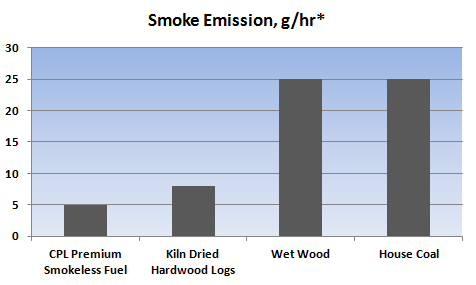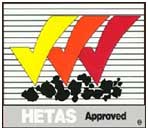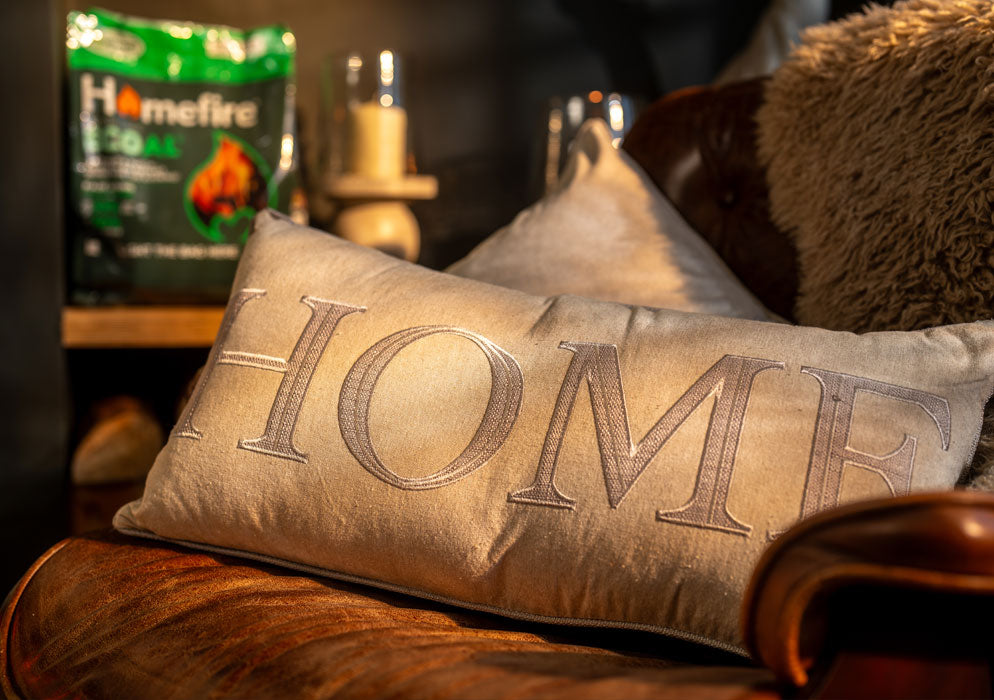
Knowledge Base
Delivery
Our Unique Fireside Delivery Service
Can you deliver it to my address?
We deliver to most of mainland England, Scotland, and Wales, the Isle of Man, and the Isle of Wight. You will be notified if we cannot fulfil your delivery, and a full refund will be provided.
How long will my order take to deliver?
Standard delivery (excluding Scotland): up to 10 working days, but these can increase during busy periods. We will do our best to keep you updated with texts/emails informing you of your delivery progress. If we can get to you quickly, we will.
Standard delivery for Scotland: We operate a regional delivery service returning to the same area once every two weeks. When you place your order, delivery could take up to 10 working days.
What time of day will delivery be made?
Deliveries are typically made all day during weekdays, between 8 am and 6 pm.
Where on my property will the driver deliver to?
The answer to this question depends on what you order.
Bagged product up to 50kg in weight is hand-delivered direct to your coal bunker or log store by our drivers. Whilst the horse and cart may have gone, we still traditionally deliver these bags. A Homefire delivery driver hoists the bag onto his back and carries it down your garden path to where you want it. Our delivery drivers are the best in the business, doing a physically demanding job in all weathers. They are all extremely helpful, so if you don't ask them to tackle an "assault course" of obstacles across your property, they will deliver the bags to wherever you ask them to. However, due to Covid-19 restrictions, we cannot complete delivery if it involves entering into or through a customer's residence.
Some of our coal and smokeless coal products are delivered in 50kg open sacks. These open sacks are reusable, so we don't leave them behind, taking them with us after tipping the fuel out into a suitable coal bunker or store.
Dumpy bags, pallets, or crates greater than 50kg are much more challenging to deliver because of their greater size and weight. The product will arrive at your home on the back of a large truck equipped with a tail-lift (no crane) and a hand pump truck for the driver to pull your palletised product off the vehicle. The driver will try and place the pallet where you want it. However, narrow entrances, gravel driveways, uneven or soft surfaces, and even moderate inclines are all obstacles that will restrict where the driver can drop your pallet. This may result in delivery to kerbside, and consequently, you are faced with physically moving the product to where you want it on your property.
You should notify us when placing an Order of any vehicle access restrictions or issues that may prevent us from safely delivering your Order.
Do I need to be at home when you arrive to make the delivery?
No. But you need to tell us where we need to leave the goods on your property so they are safe and secure. We'll do our best to leave your goods where requested (see the answer to the question - Where on my property will the driver deliver to?), and then push a delivery note through your letterbox. If we can't safely make the delivery, we will take the goods away and contact you to arrange a new delivery time when you can be in.
What is the Text before delivery service?
As the name suggests, request this service, and we'll text you the day before to let you know your order is on its way. Just select this option during checkout.
Is there a minimum order value?
To complete your purchase, your order value must be £100 or more.
Is there any delivery charge?
The cost of delivery is included in the price of the Goods.
Does the price quoted on the website include VAT?
Yes.
What if I want to return the goods?
If you are unsatisfied with your purchase, please contact us within 14 days of receipt. We will arrange to collect the goods at our cost and sort out a refund. We will refund you in full within 14 days of collecting the goods, providing the goods are returned in original packaging and condition. We will refund you using the same credit or debit card to pay for the goods.
If you have questions about our delivery or returns process, please do not hesitate to contact us at the Customer Service number at the top of this page.
How To Light A Log Fire
Pallet delivery:
5-7 working days, unless otherwise stated within the individual product description, though we will do our very best to get to you sooner. If we anticipate taking any longer than this, one of our customer service team will be in touch to advise you of a revised date.
Delivery time:
Weekdays, between 8am and 6pm.
How will we deliver your order?
Palletised product deliveries are undertaken by our approved 3rd party pallet delivery company. Product will arrive at your home on the back of a large truck, equipped with a tail-lift (no crane) and a hand pump truck for the driver to pull your palletised product off the vehicle. The driver will try and place the pallet where you want it. However, narrow entrances, gravel driveways, uneven or soft surfaces, and even moderate inclines are all obstacles that will restrict where the driver is able to drop your pallet. This may result in a delivery to kerbside, and consequently you being faced with the task of physically moving the product to where you want it on your property.
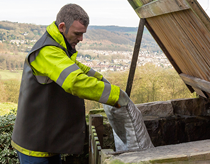
Not going to be in? Don't worry!
You do not need to be at home for us to complete a delivery. But you do need to tell us where on your property we need to leave the goods so they are safe and secure. We'll do our best to leave your goods where requested subject to the restrictions described above. If we are unable to safely make the delivery, we will take the goods away, and contact you to arrange a new delivery time when you can be in.
Important note: You should notify us at the time of placing an Order of any vehicle access restrictions or issues that may prevent us from safely delivering your Order.
If you have any questions about our delivery process, please do not hesitate to call us on the telephone number displayed at the top of this website.
Please be aware that for most products and for most postal codes, we offer a hand-delivered service direct to your bunker or store, meaning you can avoid the trouble of having to move the product yourself. If this is of interest please make sure to order the single bag alternative instead.
Cash & Carry Locations Across The UK
Find Smokeless Coal and Firewood Fuel Near You
Looking for smokeless fuel or reliable coal suppliers in your area? Homefire has you covered.
Our nationwide network of Cash & Carry locations makes it easy to pick up high-quality smokeless fuels and house coal near you – perfect for open fires, multi-fuel stoves, and other solid fuel appliances.
With convenient access and expert advice at every site, you can be confident you're getting the best products at competitive prices. Prefer doorstep service? Many locations also offer fast and efficient coal and firewood delivery to keep you warm all year round.
Use this map to find your nearest Homefire Cash & Carry location near you and get the fuel you need, when you need it.
Solid Fuel Advice
See How Burning Homefire Could Save You Money In 2022/23 Winter
A recent study into the benefits of smokeless solid fuels found that using a multi-fuel stove with smokeless fuel could save 11% per annum or a wood-burning stove with kiln dried wood 7% per annum, helping households save money on their heating bills as we enter the colder months.
The study into smokeless solid fuels, issued in October 2022, was commissioned by Homefire Group Limited and carried out by independent consultants Gemserv. It suggests that consumers with a log or multi-fuel stove could be acting more economically rationally and climate-friendly by switching to zonal heating this winter.
Modelled results of the study found that:
- Households with gas central heating who adopt zonal heating using wood fuel could save on average, £132 / year, the equivalent of a 6.8% saving on heating bills
- Using a smokeless solid fuel as secondary heating could increase savings to £213, the equivalent of an 11.0% saving. Savings increase even further for homes centrally heated using higher cost heating fuels such as heating oil or direct electric.
- Using renewable, sustainably sourced wood fuel instead of fossil fuel gas results in typical carbon savings of over half a tonne of CO2e / year.
These findings are based on the October 2022 price cap.
How Do We Make Ecoal?
Watch our video to see how we make our most eco-friendly briquette.
The Coal Ban Is Coming On May 1st 2023
Government plan to improve air quality
The Government wants to clean up the air we breathe.
To do this, they are going to phase out the burning of "Dirty" fuels such as House Coal, Wet Wood and Coal Ovoids with lots of sulphur, replacing them with "Clean" fuels such as our approved Homefire Smokeless Coal and Ready to Burn Kiln Dried Logs.
But don't worry!
There is no need to stop burning any of the Homefire range of products or brands like Brazier found on our website. You can still enjoy a cosy fire, and you have to burn brands like Homefire to cut air pollution.
Want to make the switch sooner?
You don't need to wait. Homefire has a wide range of clean fuels for you to choose from, to suit every type of appliance and setting. Follow these links to Smokeless Fuel or Kiln Dried Logs to find the product for you.
Homefire can help!
As the UK's largest manufacturer and distributor of smokeless fuels, Homefire has developed a range of cleaner fuels that mimic the look and feel of a coal fire.
No need to stop burning; it's all about switching to cleaner fuels!
Our video below explains everything you need about the ban. Please note the video mentions the ban coming into place on February 2021, but this is now changed to May 1st 2023.
The good news is there is no need to stop burning any of the Homefire products. Find out more below.
How Will I Be Affected By The Coal Ban?
If you are already a Homefire customer or wish to be… you would be in no way affected by the coal ban. For years, our range of fuels has only consisted of cleaner and greener fuels. All of which will be at your disposal for the years to come.
Rest assured that when you burn our Homefire range in your home, you are using a greener fuel.
Planning to switch sooner?
Now that you are in the market for a new alternative for house coal, look no further. Our Homefire Ecoal produces less smoke, less C02 more heat and lasts longer than either coal or wood. Designed for use on open fires and multi-fuel stoves, the hexagonal shape promotes air flow resulting in attractive flames and tons of heat.
It's all about switching to cleaner fuels!
Our video below explains everything you need to know about the ban. Please note the video mentions the ban comes into place on February 2021 but this is now changed to May 1st 2023.
How Can I Benefit From Using Homefire Smokeless Fuels?
Enhanced performance and fire life
Smokeless fuels produce a consistently higher heat and can last as much as 40% longer than ordinary house coal. This means that even though house coal may appear cheaper initially, choosing smokeless fuel will save you money in the long term due to its superior performance.
Buying the cheapest coal is often a false economy. Premium products are more efficient as they produce a higher heat and a longer burning time than their economy counterparts. Paying that little bit extra for a better
performing fuel will save you money in the long term, as you end up using less fuel to create your desired heat.
Compliance with The Clean Air Act
Smokeless fuels comply with The Clean Air Acts of 1956 and 1968, which were introduced to deal with the smog caused by the widespread burning of ordinary house coal.
To combat this pollution, Smoke Control Areas have been introduced in the majority of large towns and cities in the UK with selected smokeless fuels approved as authorised for use in these areas.
Homefire smokeless fuels have passed rigorous tests to ensure that they are capable of burning without producing excess smoke and can therefore be used in any Smoke Control Area.
Better for your health
According to medical research, solid fuels can also be beneficial for your health. Families who use solid fuel are less likely to suffer from hay fever, asthma and eczema because the use of a chimney draws fresh air through the house and removes ‘polluted’ air. A better-ventilated home, combined with the use of smokeless fuels, is better for both your health and the environment.
Better for your appliance
Coal or Petcoke Briquettes can damage your stove, burning too hot or clogging it with soot, both of which can invalidate your stove warranty. Smokeless Fuels are specially designed and approved for use on your stove or grate, giving out more heat, but in a more controlled way, meaning you enjoy a great fire for longer.
Quality assurance
Smokeless fuels are carefully manufactured to the highest standards. The contents of each smokeless fuel briquette is monitored for consistency of quality and performance.
Multi-purpose
Smokeless fuels are extremely versatile as they can be used in a wide range of open fires and closed appliances, such as multi-fuel stoves, room heaters, and cookers. Whereas traditional coal could damage your multi-fuel stove, smokeless fuel is actually more efficient when burnt in this type of appliance.
Reducing our Carbon Footprint
Smokeless fuels are much kinder to the environment than traditional coal, producing up to 80% less smoke and 40% less CO2 when burnt. Homefire invest heavily in developing and testing new smokeless fuels in order to improve air quality across the UK.
Switching to smokeless fuels, which are manufactured to contain natural binders and materials, can dramatically reduce the carbon footprint left by burning solid fuels.
How To Get The Best From Your Solid Fuel Appliance
Different fires, fuels and appliances all work and perform in different ways. However, there are certain things you can do that will help you get the best results from whatever you’re using.
Follow these simple steps and you’ll be warm and cosy in no time.
Open fires
Lighting
1. Place 2 firelighters and sufficient kindling to cover the fire bed.
2. Place a layer of fuel on top.
3. Light the firelighters, ensuring that your boiler damper (if fitted) is closed, and your draft regulator is open.
4. When the fire is well lit, add more fuel and adjust the draught until you have your required burning rate.
The Royal Society for the Prevention of Accidents (ROSPA) recommends using a fireguard with any open fire, especially if children, the elderly or pets are around.
De-ashing
Regular and careful de-ashing of your fire pan will significantly improve fuel economy.
1. If the ash pan is full, empty it before de-ashing your appliance. Never let ash build up until it touches the underside of the fire bars.
2. It’s important that you de-ash gently to avoid breaking the burning briquettes. Drawing a thin poker gently from the back to the front of each fire bar should be enough.
3. Remove the ash pan and contents quickly from the room. An ash pan "Tippy" comes in useful for this.
4. Replace the ash pan and make sure your pit door is placed back securely.
Refuelling
1. Before refuelling increase the level of your draught to help your fire get going again
2. Reduce draught to your desired burning rate once the fire is fully going again.
Slumbering
1. Refuel to capacity and position your banking plate if fitted
2. Close down any air controls
3. When you want to start your fire again, de-ash to uncover the still-burning briquettes. Remove the banking plate, open any air controls and add new fuel.
Multi-fuel stoves and room heaters
Lighting
1. Remove the ash pit door to maximise the through the draft.
2. Place 2 firelighters on a layer of fuel. Cover with kindling wood and position more fuel around them.
3. Light the firelighters and put more fuel over them.
4. When the fire is going well, replace the ash pit door (leaving it open can cause damage) and set your thermostat to the required level.
De-ashing
Regular and careful de-ashing of your fire pan will significantly improve fuel economy.
1. If the ash pan is full, empty it before de-ashing your appliance. Never let ash build up until it touches the underside of the fire bars.
2. Remove the ash pan and contents quickly from the room. An ash pan "Tippy" comes in useful for this.
3. Replace the ash pan and make sure your pit door is placed back securely.
4. De-ashing should always be done according to the manufacturer's instructions.
Refuelling
1. Don’t let the firebed get too low before refuelling as this can lead to a build-up of clinker above the grate.
2. Before you refuel, clear ash from the grate by gently using a poker or mechanical de-ashing system.
3. Make sure your ash pan is emptied regularly. Never let ash build up so it touches the underside of the fire bars.
4. Open the thermostat fully before adding fuel to the firebox.
5. Refuel the fire to the required level.
6. Ensure appliance and ash pit doors are properly closed.
7. Leave the thermostat open for about 15 minutes to allow the fire to get going again, then set it to your required level.
Slumbering
1. Get your fire ready by turning up the thermostat for 20 minutes. Do not de-ash the fire bed.
2. Refuel to your required level, then turn down the thermostat to a low level immediately afterwards and make sure all doors are securely shut.
4. Although our fuels can slumber for long periods, we recommend that you raise your appliance to full output for at least half an hour, twice a day.
5. To recover your fire from slumbering, gently de-ash the firebed and turn the thermostat up before to re-fuelling.
Why Does The Size Of Smokeless Coal Matter?
Larger-sized briquettes like Homefire and Ecoal give a more authentic looking fire, as they look like lumps of coal and more importantly there are large gaps between the briquettes for better airflow leading to bigger and better flames. Larger-sized briquettes are recommended for open fires and glass-fronted stoves.
Small-size briquettes like Phurnacite or Stoveheat sacrifice visual appeal for increased heat output and longer fire life. Their small size means they pack together into a tight firebed, which restricts airflow so that they burn with a super intense glow, radiating heat for up to 18 hours (Phurnacite under ideal conditions). Small-sized briquettes are recommended for closed appliances such as cookers, boilers, and room heaters.
Mid-size briquettes such as Taybrite are a compromise between visual appeal and fire life and are consequently recommended for use on all appliance types and open fires.
Ultimately all our fuels work on all types of open fires and appliances (with the exception of gravity-fed boilers), so the choice of which fuel is best for you, comes down to what properties of the fire you value most.
What's The Perfect Smokeless Coal To Burn At Christmas?
Let’s be honest, there’s enough to do at Christmas, without having to worry about spending even more precious time getting your fire going.
With Ecoal Instant Light you can light your fire with just one bag and one match! No kindling or firelighters are required. Simply pop the whole bag in the fireplace, light the corners, and then relax! (Or run back to clearing up wrapping paper, and stuffing the turkey).
Ecoal Instant Light really is the perfect fuel for the busy festive period. Ideal for use on open fires and multi-fuel stoves, one bag of Ecoal will burn for up to 3 hours.
Watch our video and see just how easy it is to use Ecoal Instant Light!
Ecoal is a revolutionary smokeless coal, and is the first coal in the world to be made from 50% renewable materials. It produces 40% less CO2 and 80% less smoke than traditional coal. So you can enjoy your beautiful fire whilst safe in the knowledge that as a solid fuel burner, you’re doing your part for the environment this winter.
What Are The Benefits Of Solid Fuel?
On a cold winter night, there’s nothing better than putting your feet up in front of a real fire with its dancing flames and warm glow.
But as well as its aesthetic features, there are plenty of other benefits to burning solid fuel in your home including:
Low running costs: Solid fuel is an efficient and economical method of heating your home 24 hours a day.
Healthy option: Solid fuel heating can greatly reduce condensation, eliminating household mould often associated with ‘on/off' fires. Medical research has also shown that solid fuel heating can reduce the risk of hay fever, asthma, and eczema.
Better ventilation: Homes with solid fuel heating are better ventilated than those with other forms of heating; the very use of a chimney will induce ventilation into a home drawing in the fresh air and removing the ‘polluted’ air.
Wide range of fuels: From smokeless coal to Ready to Burn kiln-dried wood, there’s a solid fuel to suit your appliance in all parts of the country.
Convenient and easy to use: Modern pre-set controls keep your home at the desired temperature throughout the day
Guaranteed heat: With solid fuel heating you can hold stock, ensuring that your home will be warm even in the most adverse weather conditions. Whatever the weather you don’t need to worry about power cuts or supply failures.
And here are some handy tips for solid fuel users...
- Always use the right fuel on your appliance. The right fuel will perform better in the appliance for which it was designed to burn. Our interactive fuel chooser allows you to sort our wide range of fuels by the categories that matter to you.
- Always burn the best quality fuel you can afford. The heat content will be higher and there will be less ash.
- Use the riddling device and a poker to effectively clear ash and clinker (the stony residue from burnt coal) from the grate. The fire will not burn to capacity if the grate is clogged. Leaving ashes to accumulate on the grate and in the ash pan below can result in damage to the fire.
- Have your chimney swept regularly – at least once a year or more frequently if burning bituminous coal or wood.
- Ensure appliances are annually serviced by a qualified engineer and regularly maintained in accordance with the manufacturer’s instructions.
- Always use a competent person, for instance, a HETAS registered installer when you have a new solid fuel heating fire fitted.
What Are The Benefits Of Homefire Smokeless Fuels?
Today, more and more people are rediscovering the joy of a real fire, whether it’s by opening up existing fires and chimneys or investing in the new generation of glass-fronted stoves.
A real fire can make a huge impact in your home and if you want to burn solid fuel and get the best possible performance from your appliance, choose from Homefire's smokeless fuels. Among the most popular are Homefire, Homefire Ovals, and Ecoal.
These premium quality smokeless fuels give great heating performance and are very low in smoke so they’re better for your wallet and better for the environment too.
Here’s an overview of their benefits:
Better for you
Whether you’re heating a single room or a whole house with an open fire, glass-fronted stove, or room heater, or even if you’re fuelling a cooker, Homefire has the right smokeless fuel for your needs.
Homefire smokeless coals give out a consistently higher heat and can last as much as 40% longer than traditional coal. As a result, industry figures show that although coal may appear to be cheaper, it costs about the same to heat an average-sized room with Homefire smokeless coal as it does with traditional coal, as you use less! So that means less work refuelling the fire, and no extra costs.
Better for the environment
Smoke emissions from Homefire smokeless coals are a fraction of those from traditional coal, producing up to 80% less smoke, and 25% less Carbon Dioxide. Each of our fuels also contains a percentage of renewable material which is used as a binder, further increasing their environmental credentials.
As Europe’s leading manufacturer of smokeless fuels, Homefire carries out extensive ongoing research and development to ensure continual improvement in the performance of our fuels.
Multi-purpose
Smokeless fuels are extremely versatile as they can be used in a wide range of open fires and closed appliances, such as multi-fuel stoves, room heaters, and cookers. Whereas traditional coal could damage your multi-fuel stove, smokeless fuel is actually more efficient when burnt in this type of appliance.
Our smokeless coal is the perfect sustainable choice for your open fire with less CO2 and more heat, all while lasting longer than traditional coal. Delivered straight to your door, Homefire smokeless coal comes in a variety of forms, including Brazier, Taybrite, and Ecoal Instant Light. Find the best smokeless coal for you by browsing through our collection today. Click here to shop our Smokeless Coal range today.
Firewood Advice
What Does The Wet Wood Ban Mean For Me?
From May 1st 2021, you will no longer be able to buy wet wood from any retailer. Fortunately for our existing customers, they have been using our Homefire Kiln Dried Firewood which will still be available to buy for the foreseeable future.
If you are looking to switch to a Kiln Dried Wood, at Homefire, we have a certification that helps you identify less polluting dry wood which will still be available to buy online at Homefire. The wood is verified by our independent inspectors as having a moisture content of up to 20% which means it burns with less smoke than wetter wood; and is labelled Woodsure Ready to Burn.
How Do We Make Our Kiln Dried Wood?
Watch our video to understand how we turn sustainably sourced wood into ready to burn kiln dried firewood.
Where Do We Get Our Wood From?
At Homefire we believe it's important to get our wood from sustainable forests. Watch our video to find out more.
What Is The Ready To Burn Scheme?
Ready to Burn is a Government backed scheme designed to promote the burning of properly dry firewood – which means wood that has a moisture content of less than 20%.
Better for you, better for the environment
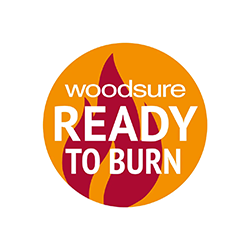
Burning Ready to Burn firewood results in 75% less smoke emissions than burning wet wood – which is especially important when you consider that poor air quality is reported to contribute to the early death of over 40,000 people every year in the UK.
Ready to Burn firewood is also better for your appliances as wet wood can blacken your stove glass and build up soot in your chimney.
So when you’re choosing firewood look out for the orange Ready to Burn label – you’ll know you’re getting the best wood for yourself, your fire and your planet.
As one of the leading firewood suppliers in the UK, we feel it is important that we not only lead the way in raising awareness of Ready to Burn firewood, but also supply our customers with the best choice of products.
All You Need To Know About Burning Firewood
Product Guide
- Kiln dried logs are the highest quality logs available - less than 20% moisture content
- Dry Wood Good: Wet Wood Bad - For multiple different reasons: it gives a rubbish fire, emits lots more smoke and clogs up your chimney with tar increasing the risk of chimney fires. All these problems go away when you use dry wood
- Dry wood is when it has a moisture content of less than 20%
- Burning logs and smokeless coal together can be beneficial to your appliance
- Only burning dry wood will minimise the risk of damage to your appliance
Kiln Dried Logs
Homefire's Kiln Dried Logs are Ready to Burn which means they are dried to an average of less than 20% so they are ready to use immediately, perform extremely well, and are very efficient. Some of the highest quality logs available, Kiln Dried Logs burn much hotter than regular seasoned logs or wet logs. This higher temperature makes kiln-dried wood considerably more efficient and economical to burn, as well as helping to prolong the life of your appliance. Any sap or water remaining in the wood is burnt off, preventing it from building up inside your appliance as tar.
- Ready to Burn - Less than 20% moisture
- High heat output, low smoke
- Ideal for use on wood burners, multi-fuel stoves, and cookers
- Protects the warranty of your appliance
Find out more about the Ready to Burn scheme via our Knowledge Base or read this article by consumer magazine Which.
Heat Logs
- Manufactured from pure wood waste
- Low moisture content
- Ready to burn immediately
- Ideal for use on multi-fuel stoves, open fires, wood burners, and chimeneas
Heat logs, or fire logs, are manufactured logs which can be burnt immediately. They can be burnt alone, or used as an aid in starting a fire. Our heat logs are made from recycled wood waste, so they’re also better for the environment.
Seasoned Logs
- Contain less than 30% moisture
- Ready for use in 1-2 weeks
- Good heat output
- Ideal for use on multi-fuel stoves, open fires, wood burners, chimeneas, and braziers
- Seasoned wood burns with medium heat output. We recommend that seasoned logs be allowed a drying time of several weeks before being burnt.
Unseasoned Logs
- Contain between 45% and 60% moisture
- Ready for use in 6-12 months
- Low-medium heat output
- Ideal for DIY seasoning
Unseasoned wood provides a low-cost option which is best suited to open fires. Hardwood and softwood netted logs have a moisture content that is typically between 45% and 60%, so we recommend that they be allowed adequate time to dry or season prior to burning.
Fire and Chimney Safety
Potential dangers from burning wet wood
Burning wet firewood can result in two very serious problems associated with condensation in the chimney.
Blockages and chimney fires
Water vapour combines with other gases and particles going up the chimney and unless the chimney is kept warm, the condensation forms a creosote-like substance which hardens to form tar on the surface of chimney liners and may seep into brickwork in an unlined chimney. Wet wood causes the chimney to cool and so condensation occurs and a residue is formed.
The residue is brown or black and can be flaky, sticky, runny, tar-like or hardened and will sometimes be all of these in the same flue. The chimney may become completely blocked or the volatile residue can ignite causing a dangerous chimney fire.
Corrosion
The excessive condensation from wet wood which normally forms in the upper part of the chimney is acidic in nature and will corrode the inner surface of a metal liner, eventually leading to perforation and failure of the liner.
Keep your Chimney Clean
Having your chimney swept regularly will help your fuel burn more efficiently, and minimise any risk of damage to your appliance or chimney. The following frequencies are the minimum recommended by the Guild of Master Chimney Sweeps. Your chimney sweep will be able to better advise the correct sweeping frequency for your situation.
- Smokeless Coal – At least once per year
- Wood – Up to four times per year
- Bituminous Coal – Twice per year
Visit the Guild of Master Chimney Sweeps, NACS, or APICS to find a reputable, reliable sweep near you.
Fit Smoke and Carbon Monoxide Alarms
Smoke and Carbon Monoxide detectors should be fitted in every home, whether the owners burn solid fuel or not. An audible alarm will alert you to any danger wherever you are in the house. Carbon Monoxide is a colourless, odourless, and tasteless gas which can be fatal if inhaled in large quantities. A carbon Monoxide alarm is a reliable way of detecting carbon monoxide before it reaches dangerous levels.
Fire and Chimney Safety Tips
- Don’t store wood or other flammable materials next to your fire or stove
- Try to use wood that is dried to 20% moisture or less
- Don’t leave open fires unattended
- Use a fire guard when necessary
- Have your chimney swept regularly
- Use audible smoke and carbon monoxide detectors
Hardwood versus softwood
For the majority of fuel burners, hardwood logs would be the best choice. This is because they are much denser than softwood and therefore produce higher heat. Due to these higher temperatures, you’ll also need fewer hardwood logs in order to heat your home, meaning longer refuelling intervals. However, softwood tends to light more easily than hardwood and burns faster due to its resin content. It gives more immediate heat so is ideal for kindling and initial burning.
Which hardwood? Ash, Birch or Oak
When it comes to finding the best wood to burn on your open fire or multi-fuel stove, there’s plenty to choose from, each with its own burning qualities. But hardwoods are generally denser than softwood and therefore burn for longer and we’d particularly recommend Ash, Birch and Oak which all have a lengthy burn time due to their greater density.
Here’s a rundown of each wood’s burning qualities.
Ash
Reckoned by many to be one of best woods for burning, it produces a steady flame and good heat output. It can be burnt when green but like all woods, it burns best when dry.
One of the best woods for a steady fire and good heat. Although ash will burn when green, it burns better when seasoned. Ash wood produces excellent heat, a nice flame and it lasts reasonably well.
Birch
Produces good heat output but it does burn quickly. It can be burnt unseasoned, however the sap can cause deposits to form in the flue with prolonged use.
These logs burn quickly but nevertheless provide good heat output, bright lively flames and a pleasing smell. Best mixed with other slower burning logs such as Elm (particularly slow burning), Ash or Oak.
Oak
Because of its density, oak produces a small flame and very slow burn, it is best when seasoned for a minimum of two years as it is a wood that requires time to season well.
Generally considered one of the very best wood fuel logs and therefore much sought after. However it must be seasoned for a long time – at least two years. It burns fairly slowly with nice flames and produces an excellent long lasting heat even when only the embers are left.
Environmentally Friendlier Wood Fuel
We work hard to ensure that all of our firewood is responsibly sourced, ensuring that future generations can also enjoy the comfort of a real log fire without harming the environment.
Ready to Burn
Ready to Burn is a Government backed initiative designed to encourage users to only burn firewood dried to less than 20% moisture content. This is because dry wood emits much less smoke than wet wood. From the Government's perspective Ready to Burn is about improving air quality, but for the user they also benefit from better heating performance, less tar build up in stoves and chimney flues and an all around better quality product. Look for the red and orange Ready to Burn logo when purchasing firewood online and on product packaging.
Sustainably Sourced
Much of our wood fuel is sustainably sourced within the UK. When you buy products from Homefire you help to:
- Prohibit the conversion of natural forests and other habitats around the world
- Reduce the use of highly hazardous pesticides around the world
- Reduce the cultivation of genetically modified trees
- Build respect for the rights of indigenous peoples around the world
How To Light A Log Fire
Step 1 - Prepare Your Stove
Before you begin the process of lighting your log fire, ensure that your appliance is in good working order. Your chimney should be cleaned bi-annually by a qualified chimney sweep, and the place where you wish to light your log fire must have suitable and adequate ventilation.
A steady air supply is essential—fire needs oxygen to thrive. Make sure any air vents are open and, if indoors, keep a window slightly ajar to help airflow circulate and support combustion. Lack of ventilation is a common reason why fires fail to light or die out quickly.
Step 2 - Rake the Grate to Remove Remaining Ash
Rake the grate using your poker and allow any old ash to fall into the ash pan below. Using the brush, sweep away any remaining ash, leaving your fireplace and hearth clean. Don't clear out the grate completely (just get rid of the ash and small cinders) as you may have some part-burnt pieces of log fire wood or solid fuel left, which are ideal to help get your log fire off to a good start.
Step 3 - Empty the Ash Pan
Cinders, from a previous log fire, that have fallen through the grate can remain hot for many hours, so be careful and do not empty hot ash and cinders into combustible containers – a metal container placed on the hearth is ideal - keep this away from carpets as the heat will transfer. Remove any decorative parts of the fire bed to gain access to the ash pan. Have your container close to hand and slowly tip the ash into your container. Be careful how quickly you tip it as you may end up covered in a cloud of ash if you do it too fast. Remove the ash from the room and replace the component parts of the fire bed so that you are in a position to lay your log fire.
Step 4 - Lay the Firelighters and Kindling
Place two or three firelighters on your fire bed.
To make a combustion chamber around the firelighters, put one piece of kindling against the appliance's back wall. You should then place four or five more pieces of kindling against this first piece. Be careful to leave enough space to reach the firelighters.
Tip: Consider stacking your kindling in a criss-cross pattern to improve airflow between pieces and help the flames catch more evenly. You can also place a few scrunched-up sheets of newspaper underneath for a natural and effective way to get the flames going.
Step 5 - Light the Fire
Light the firelighters and wait until the kindling begins to burn.
If the kindling struggles to catch, you can gently blow on the fire to give it an extra boost of oxygen and encourage combustion. Just be cautious when doing so, always keep your face at a safe distance.
Step 6 - Wait and Enjoy
Once the flames on the log fire are established, add some small logs to the fire. Once these are burning well add some larger logs, always looking to place logs where they can help the fire spread to fill the grate. One reason why a log fire goes out is that people are too impatient, and load the log fire with fuel before the base of the fire has established itself. Avoid piling on too much wood too soon—three or four small logs are plenty in the early stages.
When you are happy that there is sufficient fuel on the log fire, replace your fire guard, clear away any fire-making materials and refill your log basket. You can then sit back and enjoy the warm log fire that your burning fireplace logs bring to your living room!
Fuel tip: The quality of your fuel plays a huge role in how well your fire lights and burns. Always use seasoned or kiln-dried firewood—our Kiln Dried Firewood is ultra-dry, easy to light, and smokeless, making it a great choice for both indoor fireplaces and outdoor fire pits. Likewise, using proper kindling, like our Kiln Dried Kindling, gives your fire the best possible start. Using damp or substandard wood will only make lighting more difficult.
* The advice we give is not exhaustive and therefore not complete. Should you choose to act upon any of the information given to light your log fire, you should do so at your own risk. We will accept no liability nor claims from actions arising from the information set out in these web pages.
What Are The Problems Of Burning Wet Wood?
Potential dangers from burning wet wood
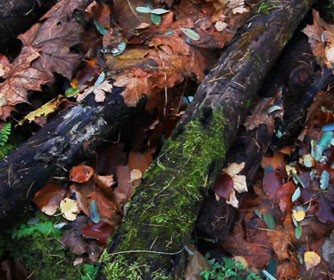
Burning wet firewood can result in two very serious problems associated with condensation in the chimney.
Water vapour combines with other gases and particles going up the chimney and unless the chimney is kept warm, the condensation forms a creosote-like substance which hardens to form tar on the surface of chimney liners and may seep into brickwork in an unlined chimney. Wet wood causes the chimney to cool and so condensation occurs and a residue is formed.
Blockages and chimney fires
The residue is brown or black and can be flaky, sticky, runny, tar-like or hardened and will sometimes be all of these in the same flue. The chimney may become completely blocked or the volatile residue can ignite causing a dangerous chimney fire.
Corrosion
The excessive condensation from wet wood which normally forms in the upper part of the chimney is acidic in nature and will corrode the inner surface of a metal liner, eventually leading to perforation and failure of the liner.
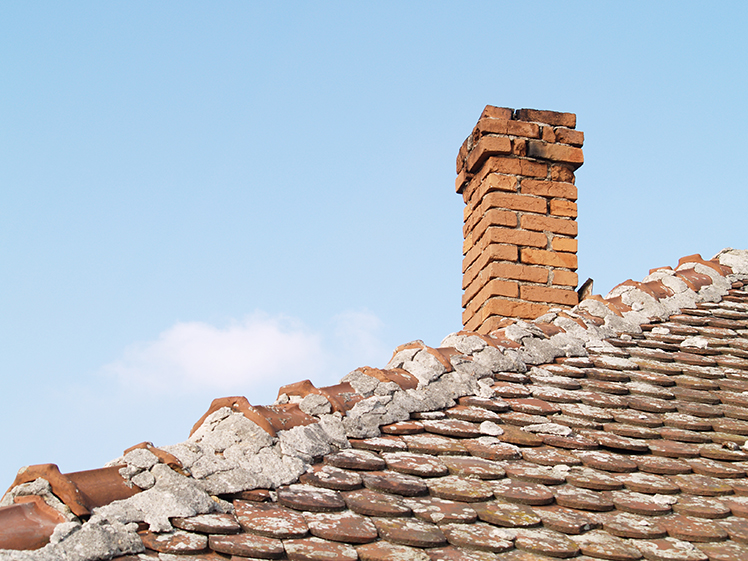
Keep your Chimney Clean
Having your chimney swept regularly will help your fuel burn more efficiently, and minimise any risk of damage to your appliance or chimney. The following frequencies are the minimum recommended by the Guild of Master Chimney Sweeps. Your chimney sweep will be able to better advise the correct sweeping frequency for your situation.
- Smokeless Coal – At least once per year
- Wood – Up to four times per year
- Bituminous Coal – Twice per year
Visit the Guild of Master Chimney Sweeps, NACS, or APICS to find a reputable, reliable sweep near you.
Fit Smoke and Carbon Monoxide Alarms
Smoke and Carbon Monoxide detectors should be fitted in every home, whether the owners burn solid fuel or not. An audible alarm will alert you to any danger wherever you are in the house. Carbon Monoxide is a colourless, odourless, and tasteless gas which can be fatal if inhaled in large quantities. A Carbon Monoxide alarm is a reliable way of detecting carbon monoxide before it reaches dangerous levels.
Fire and Chimney Safety Tips
- Don’t store wood or other flammable materials next to your fire or stove
- Try to use wood that is dried to 20% moisture or less
- Don’t leave open fires unattended
- Use a fire guard when necessary
- Have your chimney swept regularly
- Use audible smoke and carbon monoxide detectors
To read DEFRA's guide to open fires and wood-burning stoves, click here.
A Customer's Tale: The True Cost Of Burning Wet Wood
We sometimes hear stories from our customers, who have tried to save themselves a few pennies by collecting their own firewood from the local woods or buying it cheap off the back of a lorry. But the truth is that burning wet firewood is a false economy and will cost you more in the long term. Instead, we recommend only burning kiln-dried firewood for the following reasons:
- Greater heat output than wet wood
- Greatly reduced emissions and improved air quality compared to burning wet wood (see graph below)
- Better for your appliance – the stove glass will not blacken and soot will not build up as quickly in your chimney
- Better value than seasoned and unseasoned wood (wet wood)
- Ready to Burn - no need to store and wait years for them to dry
Take a look at the following example. Our new customer John certainly agrees...
The 2017/18 UK winter was the coldest in years and served as a reminder that the need to warm your home is more important than ever. If you have a multi-fuel stove and love burning firewood, it’s tempting to try and save yourself a few pennies by collecting your own wood fuel from local woodlands and parks.
Take one of our new customers, John. Having recently bought a brand new multi-fuel stove, John indulged in a spot of foraging and went collecting freshly fallen branches for firewood (known as ‘non-seasoned wood’ or ‘wet wood’). Unfortunately, this is where things started to go wrong. A few weeks of attempting to burn the wet wood proved a disappointing experience for John with his stove taking ages to light due to the high moisture content of the wood he collected.
Because the wet wood is such low-quality firewood (with a moisture content of between 45% and 80%), it gives off very little heat, burns very slowly, and may even go out as it is so wet. It gives off less heat because the energy is used up driving off the water in the wood, resulting in steam and a dismal spitting fire with very little heat output.
To sustain any heat at all John was constantly refuelling the fire and was soon running out of stock. As well as poor heating performance, the wet wood’s burning inefficiencies result in more emissions, smoke, and pollutants into the atmosphere, negating the benefits to the environment. These emissions contain tar, soot, and highly flammable creosote which can also clog up a chimney or flue leading to more calls to the chimney sweep.
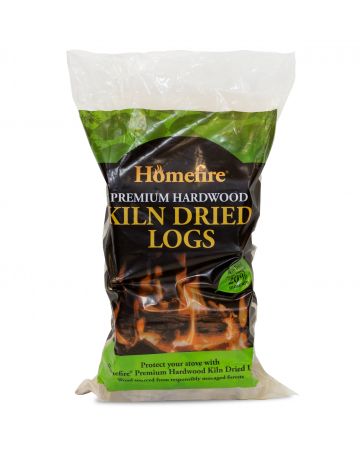
John gave up eventually but if he’d persisted in burning the wet wood, the build-up of highly flammable creosote would have severely damaged his flue liner and in the worst-case scenario resulted in a chimney fire. John could have seasoned his wood to dry it out first, but this can take months, if not years, depending on the species of wood.
If you love burning firewood and want to burn it straight away, there’s a very straightforward way to avoid these problems. We would strongly recommend that you only use Homefire's range of Homefire Kiln Dried Logs which are certified as Ready to Burn by Woodsure and sourced from sustainable forests. Watch our videos to see where we source our wood and how we make kiln dried logs.
This means moisture content is 20% or below so they burn hotter, at a higher temperature, and as the names suggests can be burnt straight away with no additional drying time. The higher temperature makes kiln-dried wood considerably more efficient and economical to burn, as well as helping to prolong the life of your appliance. Kiln-dried firewood is also more environmentally friendly as the burning of such dry wood emits much less fine particulate matter into the atmosphere. Any sap or water remaining in kiln-dried wood is burnt off, preventing it from building up inside your appliance as tar.
As a new customer, John is now buying Homefire Kiln Dried Logs and enjoys a warm, crackling log fire every night.
Remember, if you love burning firewood buy Ready to Burn kiln-dried hardwood logs.
Can I Burn Smokeless Coal And Kiln Dried logs Together?
Turn up the heat
Burning coal and logs together can produce a gorgeous fire mixing the aroma and long flames of a log fire with the high heat output and longevity of solid fuel. Mixing fuels can also be beneficial to your appliance, as the higher temperatures produced by the coal help to drive off any moisture in the logs, reducing the build-up of tar.
Getting the mix right
We recommend that only smokeless coal and Ready to Burn kiln-dried wood. The lack of moisture in the wood is crucial, so if you don’t use kiln-dried wood always ensure that your firewood is well seasoned before burning it with coal.
Our customers have told us that their favourite smokeless fuels to burn with logs are Homefire Ovals and Ecoal.
Always follow the manufacturer's instructions for your appliance with regards to choosing a fuel, and mixing fuels.
If you’re buying firewood to warm your home, Homefire kiln dried logs are the highest quality firewood available for multi-fuel stoves and open fires as they burn at a high temperature with a bright, natural flame.
Our kiln-dried logs are also now officially certified by Woodsure Ready to Burn scheme which means they’re dried to less than 20% moisture.
What Fuels Can I Burn In A Multi-Fuel Stove?
So, you’re thinking of buying a multi-fuel stove, but not exactly sure what you can burn in it. We supply a range of multi fuel options no matter your needs, from long burning, extra hot flames and eco-friendly solutions.
Burning Smokeless Coal in a Multi-Fuel Stove
Ecoal
A revolutionary smokeless coal that’s made with up to 50% renewable materials. Provides a high and sustained heat output, while being better for the environment.
Homefire Smokless Coal
Our best performing smokeless coal – it lasts up to 40% longer than house coal, producing great heat performance and burning with a beautifully natural flame.
Homefire Ovals
A slow-burning smokeless coal that packs together in the grate to provide maximum heat output for up to nine hours.
Taybrite
A multi-purpose smokeless fuel that’s easy to light and produces a long-lasting controllable heat. Taybrite can also slumber for long periods.
Burning Firewood in a Multi-Fuel Stove
Ready to Burn Kiln Dried Logs
The highest quality logs available, they have a very low moisture content and will burn at a high temperature and with a natural flame and aroma.
Heat logs
Easy to light logs that burn with a long flame and a good heat output. Often used as an aid to lighting fires, or to top up existing fires. Made from 100% recycled wood.
Seasoned hardwood logs
Long-burning logs burn at a high temperature to produce a naturally beautiful and aromatic flame.
Other Logs
If you cut your own logs or buy them from other suppliers, always make sure they are properly seasoned before you burn them, as wet wood can damage your stove or chimney. However, to save you time and money in the long run, we’d recommend you only buy Ready to Burn Kiln Dried Logs.
Burning smokeless coal and firewood together
Burning smokeless coal and firewood together can be beneficial to your multi fuel stove. The extra heat from the solid fuel drives off any moisture in your logs, significantly reducing the build-up of tar and rusting. A fire of both smokeless coal and firewood will also burn hotter for longer.
Don’t use house coal in a multi fuel stove
Unless specifically stated in your manufacturer’s guide, avoid using house coal in your stove. It burns at a much higher temperature, which may cause damage and the smoke will blacken your stove’s glass.
How To Guides
How Do I Light My Coal Fire?
The video below will take you through the surprisingly simple steps to light your coal fire.
Before you get started, you will need Homefire firelighters (we use white kerosene firelighters in this video as they are the most common, but other natural firelighters such as Twizlers or Fibre-Lighters work equally as well), dry kindling wood and good quality coal or Homefire smokeless coal.
Always start with a clean grate.
Step 1
Firstly, place 2-3 Twizlers onto the firebed.
Step 2
Then, add the kindling on top of the Twizlers. This is your combustion chamber. For the time being ensure that you leave plenty of air gaps.
Step 3
Light, the Twizlers from underneath the kindling.
Step 4
Once the Twizlers are lit, add a few more pieces of kindling to the fire to build the heat.
Step 5
Immediately, start to add a generous amount of smokeless coal on top of the fire.
Step 6
Ensure all the kindling is covered with the smokeless coal.
Step 7
Give the fire enough time to grow and for the smokeless coal to catch light.
Step 8
Finally, you can sit back, relax and enjoy the warmth of your cosy fire.
How To Light A Log Fire
Step 1 - Prepare Your Stove
Before you begin the process of lighting your log fire, ensure that your appliance is in good working order. Your chimney should be cleaned bi-annually by a qualified chimney sweep, and the place where you wish to light your log fire must have suitable and adequate ventilation.
A steady air supply is essential—fire needs oxygen to thrive. Make sure any air vents are open and, if indoors, keep a window slightly ajar to help airflow circulate and support combustion. Lack of ventilation is a common reason why fires fail to light or die out quickly.
Step 2 - Rake the Grate to Remove Remaining Ash
Rake the grate using your poker and allow any old ash to fall into the ash pan below. Using the brush, sweep away any remaining ash, leaving your fireplace and hearth clean. Don't clear out the grate completely (just get rid of the ash and small cinders) as you may have some part-burnt pieces of log fire wood or solid fuel left, which are ideal to help get your log fire off to a good start.
Step 3 - Empty the Ash Pan
Cinders, from a previous log fire, that have fallen through the grate can remain hot for many hours, so be careful and do not empty hot ash and cinders into combustible containers – a metal container placed on the hearth is ideal - keep this away from carpets as the heat will transfer. Remove any decorative parts of the fire bed to gain access to the ash pan. Have your container close to hand and slowly tip the ash into your container. Be careful how quickly you tip it as you may end up covered in a cloud of ash if you do it too fast. Remove the ash from the room and replace the component parts of the fire bed so that you are in a position to lay your log fire.
Step 4 - Lay the Firelighters and Kindling
Place two or three firelighters on your fire bed.
To make a combustion chamber around the firelighters, put one piece of kindling against the appliance's back wall. You should then place four or five more pieces of kindling against this first piece. Be careful to leave enough space to reach the firelighters.
Tip: Consider stacking your kindling in a criss-cross pattern to improve airflow between pieces and help the flames catch more evenly. You can also place a few scrunched-up sheets of newspaper underneath for a natural and effective way to get the flames going.
Step 5 - Light the Fire
Light the firelighters and wait until the kindling begins to burn.
If the kindling struggles to catch, you can gently blow on the fire to give it an extra boost of oxygen and encourage combustion. Just be cautious when doing so, always keep your face at a safe distance.
Step 6 - Wait and Enjoy
Once the flames on the log fire are established, add some small logs to the fire. Once these are burning well add some larger logs, always looking to place logs where they can help the fire spread to fill the grate. One reason why a log fire goes out is that people are too impatient, and load the log fire with fuel before the base of the fire has established itself. Avoid piling on too much wood too soon—three or four small logs are plenty in the early stages.
When you are happy that there is sufficient fuel on the log fire, replace your fire guard, clear away any fire-making materials and refill your log basket. You can then sit back and enjoy the warm log fire that your burning fireplace logs bring to your living room!
Fuel tip: The quality of your fuel plays a huge role in how well your fire lights and burns. Always use seasoned or kiln-dried firewood—our Kiln Dried Firewood is ultra-dry, easy to light, and smokeless, making it a great choice for both indoor fireplaces and outdoor fire pits. Likewise, using proper kindling, like our Kiln Dried Kindling, gives your fire the best possible start. Using damp or substandard wood will only make lighting more difficult.
* The advice we give is not exhaustive and therefore not complete. Should you choose to act upon any of the information given to light your log fire, you should do so at your own risk. We will accept no liability nor claims from actions arising from the information set out in these web pages.
How To Keep Your Fire And Chimney Safe
Regular sweeping will remove soot, bird nests, cobwebs and other blockages which can create unwanted problems.
A good chimney sweep will have the necessary training and experience to notice problems which might lead to chimney fires or inefficient burning and will be able to bring any dangers to your attention.
How Often Should I Have My Chimney Swept?
Smokeless Coal – At least once a year
Wood – Up to four times a year
Bituminous coal – Twice a year
September is a sensible time to get your chimney swept before professional sweeps get booked up ahead of the busier winter months.
Where Can I Find A Good Chimney Sweep?
We recommend the hiring of chimney sweeps that are registered with any one of the agencies below, each of whom has their own strict code of guidelines and assessment required for membership.
The Guild of Master Chimney Sweeps
The National Association of Chimney Sweeps (NACS)
Association of Professional and Independent Chimney Sweeps (APICS)
If you have a multi-fuel stove, there are various HETAS approved manufactured smokeless fuels which we would recommend, including Homefire, Homefire Ovals, Ecoal50, Taybrite and Phurnacite. Suitable kiln dried wood can also be used in multi-fuel stoves and we would advise that you look for a product with a moisture content of less than 20%.
Look out for the orange Woodsure Ready to Burn logo on our wood fuel packaging so you know you are getting a quality wood fuel product with low moisture, low smoke emissions and improved heating performance.
How To Put Your Stove To bed For The Summer
Ensuring your stove is in the perfect working order now, means you'll be able to use it straightaway during that first cold night of winter.
- Summer is the best time for a stove maintenance check so it's fully functional for winter
- A fully maintained solid fuel stove is more efficient, safer to use and saves you money
- A summer clean keeps your stove looking its best if it's the focal point of your living room
- Combine a stove maintenance with a professional chimney clean from a registered sweep who will be less busy in the summer
- Failing to maintain your stove could invalidate its warranty
Below are some top tips to maintain your stove's performance throughout the year:
Remove ash, soot and debris
The first thing to do is clean any remaining ash, soot or debris from the inside of your closed appliance, paying particular attention to the glass door and the fire grate. The glass on the stove door can become discoloured over time but you can clean it with a stove glass cleaner, a scratch free scouring pad and a clean cloth. Due to the high temperatures the fire grate faces, it can become worn over time. A stove and grate polish can give a lift to your grate but if you are replacing a grate, make sure it fits properly.
Check baffle plate
Like grates, baffle plates also withstand high temperatures as they are situated inside the firebox area of the stove and subjected to the flames of the fire. It is important to clean the baffle plate of any excess soot build up as this can affect your stove’s performance. Should your baffle plate get damaged, make sure to replace it in accordance with the manufacturer’s instructions.
Check seals
To keep your stove working efficiently it’s important to check all the seals including the door rope, glass gasket seal and any joints which may have been sealed. Seals need to be airtight to avoid drawing in unwanted air to the firebox and reducing optimum performance. A good tip for checking your door seals is to fold a piece of newspaper and close the door on it. Your door will be airtight if you can't pull the paper through.
A fresh coat of paint
Refresh your appliance’s paint finish to hide any minor scratches and blemishes. However, do not use ordinary paint. You should only ever use specialist heat resistant stove paint on multi-fuel and wood burning stoves. Make sure the surface of the stove is free of rust, dirt and grease as these can ruin the end result. If you are just rejuvenating the existing finish of your stove, a single coat is all you need. If you are painting bare metal build up the finish in several layers, allowing time for the paint to dry between coats*.
*When firing the stove for the first time since painting, open a window as the paint will give off a smell during this first use.
Check for rust
Unlikely to be a problem with a modern stove but it’s worth checking nonetheless. If there is any rusting, it’s better to get it sorted sooner rather than later. Remove the rust with wire wool and then reapply stove paint to make your stove look as good as new.
Leave the door ajar during extended periods of non-use
If you’re not planning to use the stove for the summer or it’s going to be out of use for longer than a few days for any other reason, leave the door slightly open to encourage air flow and ventilation to help stop corrosion.
Have your chimney swept
Taking good care of your chimney and appliance helps protect against damage and chimney fires, and also helps ensure the longevity of your appliance, as well as keeping your fuel burning as efficiently as possible.
How often should my chimney be swept?
Smokeless Coal – At least once a year
Wood – Up to 4 times a year
Bituminous coal – Twice a year
A registered chimney sweep will ensure that the chimney is cleaned correctly, as well as carrying out any appropriate safety checks to the fireplace and chimney itself. If any problems are identified your sweep will be able to advise the best route for repair.
Finally, if you want more information about which is the best fuel for your appliance, visit the Coals2U Fuel Chooser by clicking here.
Useful Links
Heat Resistant Stove Paint - www.glowing-embers.co.uk
Stove Glass Cleaner - www.valiantfireside.com
Rope Seal Kit - www.stoveseal.co.uk
The National Association of Chimney Sweeps (NACS) - www.nacs.org.uk
The Guild of Master Chimney Sweeps - www.guildofmasterchimneysweeps.co.uk
How To Prevent Your Stove Glass From Turning Black
It’s to be expected that in the confined space of your wood-burning stove, there will be some by products present, especially if your stove is an older version and does not feature an in-built airwash system that many burners now feature.
Below are some of the reasons for your stove glass turning black and a few solutions so you can deal with the problem:
Burning unseasoned wood
This is one of the main reasons why your stove glass might be turning black. Burning wood, which is unseasoned, means energy is used on evaporation rather than burning and the incomplete burn results in excessive smoke being produced. This results in by-products such as tar, soot and creosote settling on the glass.
Most manufacturers recommend only burning wood with a moisture content of 20% or less and we always recommend using Homefire Ready to Burn kiln dried wood which guarantees you are getting a quality wood fuel product with low moisture, low smoke emissions and improved heating performance.
Burning House Coal
Burning house coal in your stove will increase the chances of the glass blackening and most stove manufacturers recommend you avoid using house coal and instead opt for Homefire smokeless fuels. Burning house coals on a closed appliance means the tar and smoke particles can find their way onto the stove glass. Even the most modern airwash system (see below) will build up a volume of tar and dust generated by burning house coal.
Lack or incorrect use of Airwash
Most modern stoves are built with their own airwash system preventing the build up of soot on the glass. Airwash systems use the vent at the top of the stove to direct a thin layer of air across the glass to wash it and reduce the build up of soot, dirt and grime.
However, not using the airwash system correctly can also result in blackened glass. If your stove is not burning at a high enough temperature (for example, by burning a small fire in a large stove), the airwash will not function properly as the stove is not hot enough. Try to avoid closing your airwash vent completely when using your stove as this can also lead to soot build up.
Fuel touching the glass
Be careful not to overfill your stove with fuel or load the fuel so it is touching the glass, as this can lead to the glass blackening in a couple of areas, rather than the entire surface.
How To Stay Safe From Carbon Monoxide
The Dangers of Carbon Monoxide
Carbon Monoxide (CO) is a poisonous gas which is given off when burning solid fuel. CO gas normally passes harmlessly out of the top of the chimney. However, if the chimney is blocked or leaky, the appliance is faulty, or if the ventilation is inadequate, Carbon Monoxide could enter your home. It can also come from faulty central heating systems, or gas appliances such as electric fires and cookers, so it isn't only solid fuel burners who should be on their guard.
Symptoms of Carbon Monoxide Poisoning
You can’t see it, taste it or smell it, but CO gas can kill quickly, and without warning. Always remember the 6 warning symptoms of carbon monoxide poisoning:
Headache
Dizziness
Nausea
Breathlessness
Collapse
Loss of consciousness
If you suspect carbon monoxide poisoning.
Get fresh air immediately. Open the doors and windows, turn off gas appliances and leave the house.
Seek immediate medical attention. CO poisoning can usually be detected by a blood or breath test.
Have your home checked thoroughly before you return and if you think there is a major problem or gas leak, call the Gas Emergency Helpline on 0800 111 999.
Protect against Carbon Monoxide Poisoning
We recommend that you take the following steps to remove the risk to yourself and your family:
Ensure that your chimney is swept regularly.
Ensure that the fire has adequate ventilation at all times.
Use only HETAS registered installers for fitting solid fuel appliances.
Fit an audible Carbon Monoxide alarm in your property.
Don't cover or block outside vents, and check that overgrown plants aren't covering them either.
Have central heating systems and gas appliances inspected yearly for leakages or damage.
Never leave a fuel burning appliance running in a garage, especially in a garage which is attached to a house.
Barbecue Carbon Monoxide
It's also wise to take precautions to protect against carbon monoxide poisoning when using a barbecue. Although the risk is not as high as with a fireplace, it is still a risk not worth taking.
Be aware of wind direction when positioning the barbecue. The smoke should not be able to blow directly in to peoples faces, or through doors or windows.
Close doors or windows nearby to the barbecue to avoid smoke filling your house.
Avoid sitting or standing directly in the path of smoke.
For further information on Carbon Monoxide, visit www.gassaferegister.co.uk or speak to your chimney sweep.
What Are The Problems Of Burning Wet Wood?
Potential dangers from burning wet wood

Burning wet firewood can result in two very serious problems associated with condensation in the chimney.
Water vapour combines with other gases and particles going up the chimney and unless the chimney is kept warm, the condensation forms a creosote-like substance which hardens to form tar on the surface of chimney liners and may seep into brickwork in an unlined chimney. Wet wood causes the chimney to cool and so condensation occurs and a residue is formed.
Blockages and chimney fires
The residue is brown or black and can be flaky, sticky, runny, tar-like or hardened and will sometimes be all of these in the same flue. The chimney may become completely blocked or the volatile residue can ignite causing a dangerous chimney fire.
Corrosion
The excessive condensation from wet wood which normally forms in the upper part of the chimney is acidic in nature and will corrode the inner surface of a metal liner, eventually leading to perforation and failure of the liner.

Keep your Chimney Clean
Having your chimney swept regularly will help your fuel burn more efficiently, and minimise any risk of damage to your appliance or chimney. The following frequencies are the minimum recommended by the Guild of Master Chimney Sweeps. Your chimney sweep will be able to better advise the correct sweeping frequency for your situation.
- Smokeless Coal – At least once per year
- Wood – Up to four times per year
- Bituminous Coal – Twice per year
Visit the Guild of Master Chimney Sweeps, NACS, or APICS to find a reputable, reliable sweep near you.
Fit Smoke and Carbon Monoxide Alarms
Smoke and Carbon Monoxide detectors should be fitted in every home, whether the owners burn solid fuel or not. An audible alarm will alert you to any danger wherever you are in the house. Carbon Monoxide is a colourless, odourless, and tasteless gas which can be fatal if inhaled in large quantities. A Carbon Monoxide alarm is a reliable way of detecting carbon monoxide before it reaches dangerous levels.
Fire and Chimney Safety Tips
- Don’t store wood or other flammable materials next to your fire or stove
- Try to use wood that is dried to 20% moisture or less
- Don’t leave open fires unattended
- Use a fire guard when necessary
- Have your chimney swept regularly
- Use audible smoke and carbon monoxide detectors
To read DEFRA's guide to open fires and wood-burning stoves, click here.
A Customer's Tale: The True Cost Of Burning Wet Wood
We sometimes hear stories from our customers, who have tried to save themselves a few pennies by collecting their own firewood from the local woods or buying it cheap off the back of a lorry. But the truth is that burning wet firewood is a false economy and will cost you more in the long term. Instead, we recommend only burning kiln-dried firewood for the following reasons:
- Greater heat output than wet wood
- Greatly reduced emissions and improved air quality compared to burning wet wood (see graph below)
- Better for your appliance – the stove glass will not blacken and soot will not build up as quickly in your chimney
- Better value than seasoned and unseasoned wood (wet wood)
- Ready to Burn - no need to store and wait years for them to dry
Take a look at the following example. Our new customer John certainly agrees...
The 2017/18 UK winter was the coldest in years and served as a reminder that the need to warm your home is more important than ever. If you have a multi-fuel stove and love burning firewood, it’s tempting to try and save yourself a few pennies by collecting your own wood fuel from local woodlands and parks.
Take one of our new customers, John. Having recently bought a brand new multi-fuel stove, John indulged in a spot of foraging and went collecting freshly fallen branches for firewood (known as ‘non-seasoned wood’ or ‘wet wood’). Unfortunately, this is where things started to go wrong. A few weeks of attempting to burn the wet wood proved a disappointing experience for John with his stove taking ages to light due to the high moisture content of the wood he collected.
Because the wet wood is such low-quality firewood (with a moisture content of between 45% and 80%), it gives off very little heat, burns very slowly, and may even go out as it is so wet. It gives off less heat because the energy is used up driving off the water in the wood, resulting in steam and a dismal spitting fire with very little heat output.
To sustain any heat at all John was constantly refuelling the fire and was soon running out of stock. As well as poor heating performance, the wet wood’s burning inefficiencies result in more emissions, smoke, and pollutants into the atmosphere, negating the benefits to the environment. These emissions contain tar, soot, and highly flammable creosote which can also clog up a chimney or flue leading to more calls to the chimney sweep.

John gave up eventually but if he’d persisted in burning the wet wood, the build-up of highly flammable creosote would have severely damaged his flue liner and in the worst-case scenario resulted in a chimney fire. John could have seasoned his wood to dry it out first, but this can take months, if not years, depending on the species of wood.
If you love burning firewood and want to burn it straight away, there’s a very straightforward way to avoid these problems. We would strongly recommend that you only use Homefire's range of Homefire Kiln Dried Logs which are certified as Ready to Burn by Woodsure and sourced from sustainable forests. Watch our videos to see where we source our wood and how we make kiln dried logs.
This means moisture content is 20% or below so they burn hotter, at a higher temperature, and as the names suggests can be burnt straight away with no additional drying time. The higher temperature makes kiln-dried wood considerably more efficient and economical to burn, as well as helping to prolong the life of your appliance. Kiln-dried firewood is also more environmentally friendly as the burning of such dry wood emits much less fine particulate matter into the atmosphere. Any sap or water remaining in kiln-dried wood is burnt off, preventing it from building up inside your appliance as tar.
As a new customer, John is now buying Homefire Kiln Dried Logs and enjoys a warm, crackling log fire every night.
Remember, if you love burning firewood buy Ready to Burn kiln-dried hardwood logs.
Can I Burn Smokeless Coal And Kiln Dried logs Together?
Turn up the heat
Burning coal and logs together can produce a gorgeous fire mixing the aroma and long flames of a log fire with the high heat output and longevity of solid fuel. Mixing fuels can also be beneficial to your appliance, as the higher temperatures produced by the coal help to drive off any moisture in the logs, reducing the build-up of tar.
Getting the mix right
We recommend that only smokeless coal and Ready to Burn kiln-dried wood. The lack of moisture in the wood is crucial, so if you don’t use kiln-dried wood always ensure that your firewood is well seasoned before burning it with coal.
Our customers have told us that their favourite smokeless fuels to burn with logs are Homefire Ovals and Ecoal.
Always follow the manufacturer's instructions for your appliance with regards to choosing a fuel, and mixing fuels.
If you’re buying firewood to warm your home, Homefire kiln dried logs are the highest quality firewood available for multi-fuel stoves and open fires as they burn at a high temperature with a bright, natural flame.
Our kiln-dried logs are also now officially certified by Woodsure Ready to Burn scheme which means they’re dried to less than 20% moisture.
What Fuels Can I Burn In A Multi-Fuel Stove?
So, you’re thinking of buying a multi-fuel stove, but not exactly sure what you can burn in it. We supply a range of multi fuel options no matter your needs, from long burning, extra hot flames and eco-friendly solutions.
Burning Smokeless Coal in a Multi-Fuel Stove
Ecoal
A revolutionary smokeless coal that’s made with up to 50% renewable materials. Provides a high and sustained heat output, while being better for the environment.
Homefire Smokless Coal
Our best performing smokeless coal – it lasts up to 40% longer than house coal, producing great heat performance and burning with a beautifully natural flame.
Homefire Ovals
A slow-burning smokeless coal that packs together in the grate to provide maximum heat output for up to nine hours.
Taybrite
A multi-purpose smokeless fuel that’s easy to light and produces a long-lasting controllable heat. Taybrite can also slumber for long periods.
Burning Firewood in a Multi-Fuel Stove
Ready to Burn Kiln Dried Logs
The highest quality logs available, they have a very low moisture content and will burn at a high temperature and with a natural flame and aroma.
Heat logs
Easy to light logs that burn with a long flame and a good heat output. Often used as an aid to lighting fires, or to top up existing fires. Made from 100% recycled wood.
Seasoned hardwood logs
Long-burning logs burn at a high temperature to produce a naturally beautiful and aromatic flame.
Other Logs
If you cut your own logs or buy them from other suppliers, always make sure they are properly seasoned before you burn them, as wet wood can damage your stove or chimney. However, to save you time and money in the long run, we’d recommend you only buy Ready to Burn Kiln Dried Logs.
Burning smokeless coal and firewood together
Burning smokeless coal and firewood together can be beneficial to your multi fuel stove. The extra heat from the solid fuel drives off any moisture in your logs, significantly reducing the build-up of tar and rusting. A fire of both smokeless coal and firewood will also burn hotter for longer.
Don’t use house coal in a multi fuel stove
Unless specifically stated in your manufacturer’s guide, avoid using house coal in your stove. It burns at a much higher temperature, which may cause damage and the smoke will blacken your stove’s glass.
Returns & Refunds
Your 14-Day Money Back Guarantee
We manufacture and distribute some of the best smokeless fuels and firewood available in the UK. That’s why we’re happy to offer you a Money Back Guarantee, if you are not completely satisfied with the goods you receive.
Simply contact us to tell us you’re not satisfied and we’ll arrange the return and organise for a replacement product or a refund – you tell us which you would prefer.
You have up to 14 days from when you receive your goods to take advantage of our Money Back Guarantee. You don’t need to tell us why you wish to return the goods, but it would help us improve if you did.
To get a refund, the goods need to be in their original packaging and in a re-saleable condition. We can’t offer a refund on any products that you have used. We reserve the right to make a charge for the return of goods. Please see our full terms & conditions for more information
Returning An Item
If you are not satisfied with your purchase for any reason, please contact us within 14 days of receipt on the telephone number displayed at the top of this website. We will arrange to collect the goods and process a refund. We will refund you in full within 14 days of collecting the goods, providing goods are returned unused and in original packaging and condition.
We will only refund you using the same credit or debit card used to pay for the goods.
Exchanging An Item
To exchange an item please visit your nearest cash & carry depot where you’ll be able to exchange your order on the spot (subject to availability).
If you prefer to use our other returns methods, simply return the unwanted item following our returns procedure and place a new order online for the product you'd like. It may take up to 14 days for the refund for your original product to be processed, from the date you send it back to us.
How long do I have to exchange a product?
In line with our returns policy, you have up to 14 days to exchange a product from the date of purchase or the date you received your order.
Refund Policy
If you cancel your order before it is despatched, we will refund you in full within 14 days of being informed of your decision to cancel.
If you decide to return your order, we will refund you in full within 14 days of collecting the goods, providing goods are returned unused and in original packaging and condition.
We will only refund you using the same credit or debit card used to pay for the goods.
Orders
Cancellation Form
We manufacture and distribute some of the best smokeless fuels and firewood available in the UK. That’s why we’re happy to offer you a Money Back Guarantee, if you are not completely satisfied with the goods you receive.
Simply contact us to tell us you’re not satisfied and we’ll arrange the return and organise for a replacement product or a refund – you tell us which you would prefer.
You have up to 14 days from when you receive your goods to take advantage of our Money Back Guarantee. You don’t need to tell us why you wish to return the goods, but it would help us improve if you did.
To get a refund, the goods need to be in their original packaging and in a re-saleable condition. We can’t offer a refund on any products that you have used. We reserve the right to make a charge for the return of goods. Please see our full terms & conditions for more information
Missing, Incomplete Or Damaged Orders
If your order is incomplete, please bear in mind that products may be sent out from multiple locations and so arrive separately; please allow a little extra time before contacting us.
For damaged products, incomplete orders or despatched orders that don't arrive within the expected time period please email our customer service team or call us on the telephone number displayed at the bottom of this website.
Prices And Payments
Payment Information
Homefire Payment Methods
We offer a range of flexible payment options to help make buying premium fuel affordable, simple and stress-free. Whether you want to spread the cost, pay later, or manage payments with ease, we've got you covered.
- Visa
- Visa Debit
- Mastercard
- Maestro
- PayPal
Have You Considered Flexible Payment Options?
Variable Direct Debit (Pay after delivery - no upfront payment needed)
Here's how it works:
- Call our Customer Services team on 0345 450 1163 (or contact us by post) to set up your Variable Direct Debit.
- Place your order as normal - no payment is taken upfront.
- We'll deliver your fuel, and then collect payment from your bank account in the week following delivery.

Budget Account (Direct Debit)
Here's how it works:
- Set up a monthly Direct Debit by calling 0345 450 1163 or contacting us by post.
- We'll take the same amount each month from your account, and you can order fuel using the balance you've built up.
Example: Order 1 tonne of Brazier at £576.00 - you'll pay £48 per month over 12 months.

Please note: This option is only available offline via contacting the Homefire Customer Services Team. T&Cs apply.
Pay Half Now, Half Later
Here's how it works:
- Pay 50% at checkout using your debit or credit card.
- The remaining 50% is paid 30 days later either by Bank Transfer, Debit or Credit Card.
Please note: This option is only available offline via contacting the Homefire Customer Services Team. T&Cs apply.
If you'd like help choosing the right payment method for you, just get in touch. Our team is happy to help with the flexible payment method that suits your needs.
Promotional Discount Codes
If you acquire a coupon, discount or promotional discount code offered by us or one of its web shops, it is valid for use online only, and not in our depots or over the telephone, unless otherwise stated.
The following conditions apply:
- For a promotional code to be valid, a valid product must be added to your basket
- Only one promotional code can be used per transaction
- If you have more than one promotional code, you may place separate orders
- Promotional codes cannot be used in conjunction with any volume discount that may apply
- All orders must be made prior to 23:59 hours on the closing date
- No cash alternative is available
- All offers are subject to stock availability
- All other Terms and Conditions Apply
Pricing
With over 40 delivery depots nationwide, we are the only online coal and firewood supplier who does not regularly need to rely on other companies to handle the delivery. For all products up to 50kg in weight, our dedicated delivery drivers will deliver direct to your log store or coal bunker, saving you the trouble of having to move product yourself.
As the UK's premier supplier of coal, smokeless coal and firewood we are able to offer our customers a number of ways to save money. These include:
- A choice of Good, Better or Best in most product categories, allowing our customers to choose the product that best suits their needs and their budget
- Volume discounts on most products, so the more you buy - the more you save
- Regular special offers and promotions throughout the year. The largest and most generous of which is our Summer Sale that runs from May to September, which offers our customers significant savings on the normal winter price. By delivering your fuel in our less busy period, we can reduce our costs which we then pass on to you in the form of lower prices.
VAT
All prices displayed include Value Added Tax (VAT).
VAT on solid fuel for domestic home heating purposes is calculated at 5%.
VAT for all other products is calculated at the standard rate of 20%.
Quality Assurance
Approved Coal Merchant
As members of the Approved Coal Merchants Scheme (ACMS), we’ve signed up to a strict consumer charter, which is a guarantee of the standards and service we supply.
We promise to...
- Supply only coal and smokeless fuel correctly described, prepared and delivered in a proper manner
- Advise customers which fuels are suitable for use in their appliance and comply with Clean Air Legislation
- Ensure that complaints will be investigated promptly and resolved to mutual satisfaction
- Give priority to orders notified as urgent on account of illness, old age or infirmity
- Provide a detailed price list
- Be insured against Public and Products Liability
- Abide by the Coal Trade Code
- You should always buy your fuel from ACMS members to protect yourself against inferior products and poor customer service
Get The Best, Get HETAS Approved Fuels!
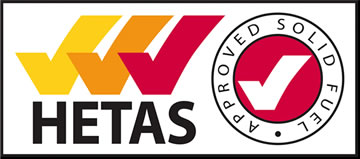
HETAS is the officially-recognised Government body that is responsible for approving all solid fuel domestic appliances, fuels and services as being safe and fit for use.
To gain HETAS approval fuels are rigorously tested across a number of strict safety and performance criteria. By choosing HETAS-approved fuels you are ensuring that you’re getting the highest quality product that will give the best possible results for your appliance.
Our HETAS approved fuels include…
- Homefire
- Homefire Ovals
- Phurnacite
- Taybrite
- Welsh Anthracite
For a full list of HETAS approved fuels please click here.
Supporting FSC® Certified Products
Manufactured In The UK
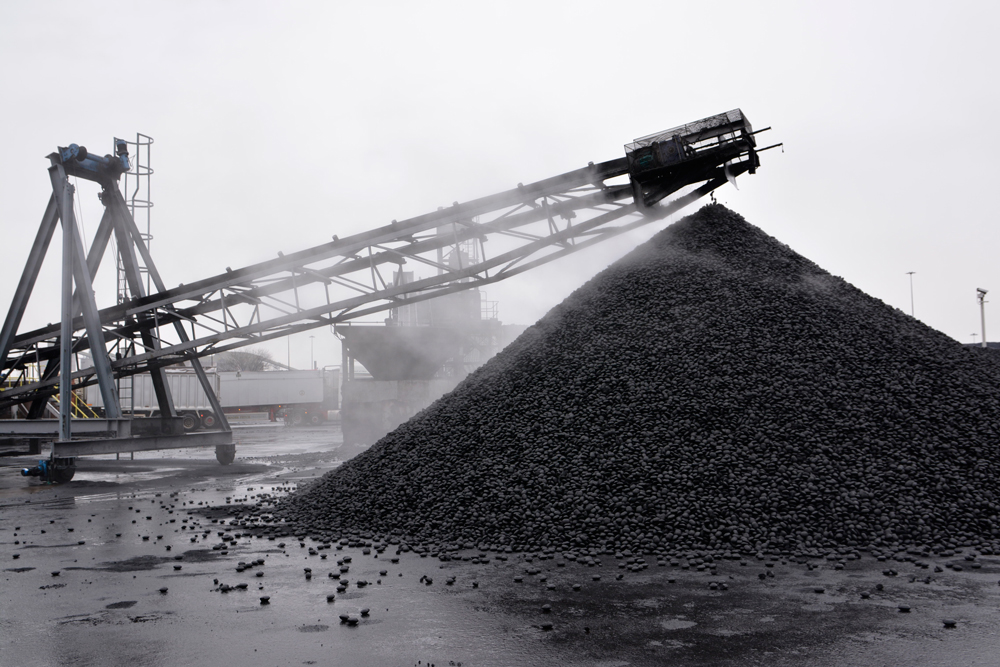
At our production plant located at Immingham, North Lincolnshire, Homefire manufactures over 300,000 tonnes of solid fuel every year to supply homeowners in the UK, Ireland, France, Belgium, and Germany.
Homefire produces such well-known brands as Homefire, Ecoal50, Homefire Ovals, Brazier, Phurnacite, Taybrite, Wildfire, Stoveheat Premium, Supertherm, and Multi heat.
Health And Safety
What Are The Problems Of Burning Wet Wood?
Potential dangers from burning wet wood

Burning wet firewood can result in two very serious problems associated with condensation in the chimney.
Water vapour combines with other gases and particles going up the chimney and unless the chimney is kept warm, the condensation forms a creosote-like substance which hardens to form tar on the surface of chimney liners and may seep into brickwork in an unlined chimney. Wet wood causes the chimney to cool and so condensation occurs and a residue is formed.
Blockages and chimney fires
The residue is brown or black and can be flaky, sticky, runny, tar-like or hardened and will sometimes be all of these in the same flue. The chimney may become completely blocked or the volatile residue can ignite causing a dangerous chimney fire.
Corrosion
The excessive condensation from wet wood which normally forms in the upper part of the chimney is acidic in nature and will corrode the inner surface of a metal liner, eventually leading to perforation and failure of the liner.

Keep your Chimney Clean
Having your chimney swept regularly will help your fuel burn more efficiently, and minimise any risk of damage to your appliance or chimney. The following frequencies are the minimum recommended by the Guild of Master Chimney Sweeps. Your chimney sweep will be able to better advise the correct sweeping frequency for your situation.
- Smokeless Coal – At least once per year
- Wood – Up to four times per year
- Bituminous Coal – Twice per year
Visit the Guild of Master Chimney Sweeps, NACS, or APICS to find a reputable, reliable sweep near you.
Fit Smoke and Carbon Monoxide Alarms
Smoke and Carbon Monoxide detectors should be fitted in every home, whether the owners burn solid fuel or not. An audible alarm will alert you to any danger wherever you are in the house. Carbon Monoxide is a colourless, odourless, and tasteless gas which can be fatal if inhaled in large quantities. A Carbon Monoxide alarm is a reliable way of detecting carbon monoxide before it reaches dangerous levels.
Fire and Chimney Safety Tips
- Don’t store wood or other flammable materials next to your fire or stove
- Try to use wood that is dried to 20% moisture or less
- Don’t leave open fires unattended
- Use a fire guard when necessary
- Have your chimney swept regularly
- Use audible smoke and carbon monoxide detectors
To read DEFRA's guide to open fires and wood-burning stoves, click here.
How To Keep Your Fire And Chimney Safe
Regular sweeping will remove soot, bird nests, cobwebs and other blockages which can create unwanted problems.
A good chimney sweep will have the necessary training and experience to notice problems which might lead to chimney fires or inefficient burning and will be able to bring any dangers to your attention.
How Often Should I Have My Chimney Swept?
Smokeless Coal – At least once a year
Wood – Up to four times a year
Bituminous coal – Twice a year
September is a sensible time to get your chimney swept before professional sweeps get booked up ahead of the busier winter months.
Where Can I Find A Good Chimney Sweep?
We recommend the hiring of chimney sweeps that are registered with any one of the agencies below, each of whom has their own strict code of guidelines and assessment required for membership.
The Guild of Master Chimney Sweeps
The National Association of Chimney Sweeps (NACS)
Association of Professional and Independent Chimney Sweeps (APICS)
If you have a multi-fuel stove, there are various HETAS approved manufactured smokeless fuels which we would recommend, including Homefire, Homefire Ovals, Ecoal50, Taybrite and Phurnacite. Suitable kiln dried wood can also be used in multi-fuel stoves and we would advise that you look for a product with a moisture content of less than 20%.
Look out for the orange Woodsure Ready to Burn logo on our wood fuel packaging so you know you are getting a quality wood fuel product with low moisture, low smoke emissions and improved heating performance.
A Customer's Tale: The True Cost Of Burning Wet Wood
We sometimes hear stories from our customers, who have tried to save themselves a few pennies by collecting their own firewood from the local woods or buying it cheap off the back of a lorry. But the truth is that burning wet firewood is a false economy and will cost you more in the long term. Instead, we recommend only burning kiln-dried firewood for the following reasons:
- Greater heat output than wet wood
- Greatly reduced emissions and improved air quality compared to burning wet wood (see graph below)
- Better for your appliance – the stove glass will not blacken and soot will not build up as quickly in your chimney
- Better value than seasoned and unseasoned wood (wet wood)
- Ready to Burn - no need to store and wait years for them to dry
Take a look at the following example. Our new customer John certainly agrees...
The 2017/18 UK winter was the coldest in years and served as a reminder that the need to warm your home is more important than ever. If you have a multi-fuel stove and love burning firewood, it’s tempting to try and save yourself a few pennies by collecting your own wood fuel from local woodlands and parks.
Take one of our new customers, John. Having recently bought a brand new multi-fuel stove, John indulged in a spot of foraging and went collecting freshly fallen branches for firewood (known as ‘non-seasoned wood’ or ‘wet wood’). Unfortunately, this is where things started to go wrong. A few weeks of attempting to burn the wet wood proved a disappointing experience for John with his stove taking ages to light due to the high moisture content of the wood he collected.
Because the wet wood is such low-quality firewood (with a moisture content of between 45% and 80%), it gives off very little heat, burns very slowly, and may even go out as it is so wet. It gives off less heat because the energy is used up driving off the water in the wood, resulting in steam and a dismal spitting fire with very little heat output.
To sustain any heat at all John was constantly refuelling the fire and was soon running out of stock. As well as poor heating performance, the wet wood’s burning inefficiencies result in more emissions, smoke, and pollutants into the atmosphere, negating the benefits to the environment. These emissions contain tar, soot, and highly flammable creosote which can also clog up a chimney or flue leading to more calls to the chimney sweep.

John gave up eventually but if he’d persisted in burning the wet wood, the build-up of highly flammable creosote would have severely damaged his flue liner and in the worst-case scenario resulted in a chimney fire. John could have seasoned his wood to dry it out first, but this can take months, if not years, depending on the species of wood.
If you love burning firewood and want to burn it straight away, there’s a very straightforward way to avoid these problems. We would strongly recommend that you only use Homefire's range of Homefire Kiln Dried Logs which are certified as Ready to Burn by Woodsure and sourced from sustainable forests. Watch our videos to see where we source our wood and how we make kiln dried logs.
This means moisture content is 20% or below so they burn hotter, at a higher temperature, and as the names suggests can be burnt straight away with no additional drying time. The higher temperature makes kiln-dried wood considerably more efficient and economical to burn, as well as helping to prolong the life of your appliance. Kiln-dried firewood is also more environmentally friendly as the burning of such dry wood emits much less fine particulate matter into the atmosphere. Any sap or water remaining in kiln-dried wood is burnt off, preventing it from building up inside your appliance as tar.
As a new customer, John is now buying Homefire Kiln Dried Logs and enjoys a warm, crackling log fire every night.
Remember, if you love burning firewood buy Ready to Burn kiln-dried hardwood logs.
How To Stay Safe From Carbon Monoxide
The Dangers of Carbon Monoxide
Carbon Monoxide (CO) is a poisonous gas which is given off when burning solid fuel. CO gas normally passes harmlessly out of the top of the chimney. However, if the chimney is blocked or leaky, the appliance is faulty, or if the ventilation is inadequate, Carbon Monoxide could enter your home. It can also come from faulty central heating systems, or gas appliances such as electric fires and cookers, so it isn't only solid fuel burners who should be on their guard.
Symptoms of Carbon Monoxide Poisoning
You can’t see it, taste it or smell it, but CO gas can kill quickly, and without warning. Always remember the 6 warning symptoms of carbon monoxide poisoning:
Headache
Dizziness
Nausea
Breathlessness
Collapse
Loss of consciousness
If you suspect carbon monoxide poisoning.
Get fresh air immediately. Open the doors and windows, turn off gas appliances and leave the house.
Seek immediate medical attention. CO poisoning can usually be detected by a blood or breath test.
Have your home checked thoroughly before you return and if you think there is a major problem or gas leak, call the Gas Emergency Helpline on 0800 111 999.
Protect against Carbon Monoxide Poisoning
We recommend that you take the following steps to remove the risk to yourself and your family:
Ensure that your chimney is swept regularly.
Ensure that the fire has adequate ventilation at all times.
Use only HETAS registered installers for fitting solid fuel appliances.
Fit an audible Carbon Monoxide alarm in your property.
Don't cover or block outside vents, and check that overgrown plants aren't covering them either.
Have central heating systems and gas appliances inspected yearly for leakages or damage.
Never leave a fuel burning appliance running in a garage, especially in a garage which is attached to a house.
Barbecue Carbon Monoxide
It's also wise to take precautions to protect against carbon monoxide poisoning when using a barbecue. Although the risk is not as high as with a fireplace, it is still a risk not worth taking.
Be aware of wind direction when positioning the barbecue. The smoke should not be able to blow directly in to peoples faces, or through doors or windows.
Close doors or windows nearby to the barbecue to avoid smoke filling your house.
Avoid sitting or standing directly in the path of smoke.
For further information on Carbon Monoxide, visit www.gassaferegister.co.uk or speak to your chimney sweep.
Air Quality
Smoke Emissions From Residential Buildings
There have been a number of high profile headlines in the national press recently regarding the smoke emissions from wood burning in residential areas, particularly in and around London, and that one solution under consideration was the banning of wood burning stoves.
Although claims that stoves could be banned were certainly wide of the mark; being subsequently refuted by the Mayor of London’s office, Government and Industry have been working to tackle this problem:
- The Government backed Ready to Burn scheme was launched in 2017. Firewood or manufactured Heat Logs that has been certified with a moisture content of less than 20 percent can carry the Ready to Burn logo. This scheme is designed to raise awareness of the issues and is a clear visual indicator to consumers that the product they are purchasing is certified as being low in moisture and, therefore, low in smoke.
- Authorised smokeless fuels are actively being promoted as environmentally friendlier alternatives to house coal, with much lower smoke emissions.
|
Fuel |
|
Smoke (PM2.5) emissions |
|
Wet Wood (over 25% moisture content) |
|
25 grammes per hour |
|
Dry Wood (less than 20% moisture) |
|
5 grammes per hour |
|
House Coal |
|
25 grammes per hour |
|
Authorised Smokeless Fuel |
|
5 grammes per hour |
The above smoke emissions data is based on independent fuel testing data.
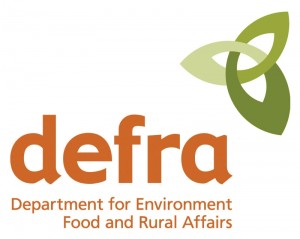
Why is the Government focused on wood and solid fuel burning in the home?
Currently approximately 2.5 million tonnes of firewood and 0.75 million tonnes of solid fuel is burnt in UK homes each year. At present only 10 percent of the firewood burnt is kiln dried wood of less than 20 percent moisture. Although a substantial amount of wood is seasoned, a lot of wood is over 20 percent moisture and contributes significantly to PM2.5 pollution. Looking at solid fuels, circa 300,000 to 350,000 tonnes of house coal is burnt per year, which generates five times the PM2.5 pollution of authorised smokeless fuels.
Should all the burning of house coal and wet wood in the home be converted to either dry firewood or authorised smokeless coal, then particulate emissions from the home could be reduced by between 70 and 80 percent, reducing total UK PM2.5 pollution by up to 29 percent.
Kiln Dried or Seasoned Wood?
When first felled , wood contains up to 60 percent moisture and is unsuitable for burning. The wood is stacked within the forest where the natural seasoning (drying out) process starts and then transported. Despite this initial drying period, the wood still has a moisture content of up to 45 percent when presented for chopping or packing.
Wood can be dried further, by two methods.
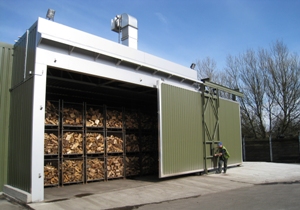
Kiln drying the wood, allows it to be quickly dried to a moisture level of less than 20% under a controlled method that involves placing the wood in a controlled kiln environment for between 3 and 7 days at temperatures up to 100 degrees Celsius. Moisture is measured during and at the end of the process, by the use of moisture meters or through lab testing of samples by completely drying the wood and measuring the moisture / weight loss, to ensure the 20 percent moisture content is achieved.
Seasoning involves stacking the wood and allowing it to dry naturally in barns or shelters. The length of time and the effectiveness of the seasoning will vary and hence the moisture content will vary significantly, unless a similar control system to that used for kiln dried wood is employed.
Testing by independent laboratories has shown that burning wood with less than 20 percent moisture content very significantly reduces smoke particle emissions. Kiln Dried wood that has achieved Ready to Burn approval is the best assurance that the 20 percent moisture content has been achieved, resulting in a product that is not only superior in terms of heat output, but has smoke emissions of five times less than freshly felled wood.
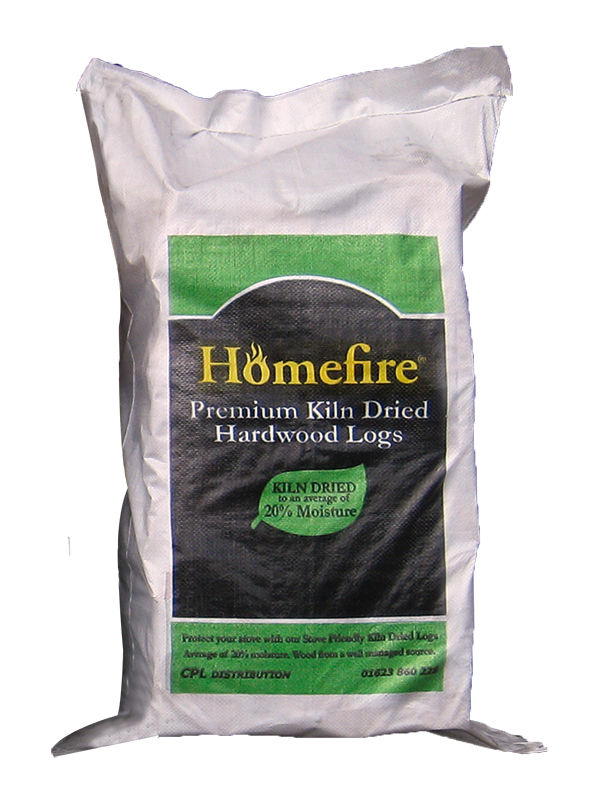
Does it cost more to enjoy a fire with the right fuels?
No. Both in the case of authorised smokeless solid fuels and Ready to Burn kiln dried wood, these low emissions fuels offer better value to consumers than house coal or wet wood.
In the case of smokeless solid fuels, they have lower volatile gas content and so while burning with less of a flame than coal they burn up to 30 percent more efficiently. (Result supported by independent testing over many years). In practical terms, the smokeless solid fuel releases 30 percent more heat into the room per kilogram burnt than house coal, so whilst the bag price might be circa 20 percent higher in cost, the actual heating cost is 10 to 14 percent lower. This is supported by SEAI findings in Ireland and independent testing in the UK.
Please see the table below:
|
|
House Coal |
|
Smokeless Fuel |
|
Price per 10kg |
£2.99 |
|
£3.99 |
|
Price per tonne |
£299 |
|
£399 |
|
Energy Content (Kwh per tonne) |
7900 |
|
8850 |
|
Burning Efficiency (energy in fuel compared to heat in room) |
28% |
|
37% |
|
Effective Kwh in room per tonne |
2212 |
|
3274 |
|
Cost per Kwh in Room |
£0.135 |
|
£0.12 |
Consumers see a similar picture when burning Ready to Burn firewood compared to unseasoned wood.
The following table compares kiln dried and unseasoned wood:
|
|
Radiant Heat* |
Price per m3 |
Price per kg |
Price per Radiant Heat |
|
Unseasoned Wood |
0.38 |
£75 |
£0.15 |
£0.39 |
|
Kiln Dried wood (Less than 20% moisture) |
0.62 |
£120 |
£0.24 |
£0.39 |
|
*Radiant Heat represents heat released into the room i.e. useable heat |
||||
Conclusion
There is no doubt that having a fire on a winter’s evening is a pleasure for many people. Doing so can still be environmentally responsible, providing the right fuels such as authorised smokeless fuels or Ready to Burn Firewood are used, helping to reduce smoke and particulates by up to five times compared to wet unseasoned wood and house coal.
The Ready to Burn scheme, recently launched by DEFRA provides consumers with an easy way to identify firewood products, including manufactured heat logs, that have a moisture content of less than 20 percent and are, therefore, are better for the environment; burning with reduced particulates.
Smokeless solid fuels provide another solution, having been developed to address the same issue of air quality back in the 1950’s.
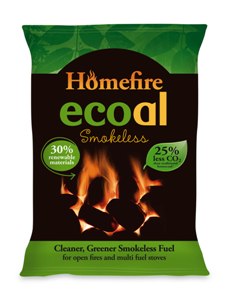
Homefire has been a leader in the area of smokeless solid fuels for many years. As well as providing smokeless fuels from coal-based sources, Homefire has lead the market with the development of Ecoal Smokeless Fuel – a blended biomass/fossil fuel that not only meets regulated low smoke limits, but also has Carbon Dioxide emissions up to 40 percent lower than house coal when burnt.
In 2017 Homefire continues to focus on new, environmentally friendlier fuels, with the launch of Homefire Supercharged Heat Logs to market. This is a fully renewable, low smoke, wood-based product, manufactured using a new process called Torrefaction to provide a fuel with 30 percent more energy than kiln dried wood and with a longer lasting fire.
The Clean Air Act And Smokeless Zones Explained
In the past, many towns and cities of the UK suffered with terrible smog, caused by the widespread use of coal fires in homes. The Clean Air Act, introduced in 1956 was one of several government measures introduced to help reduce smoke pollution and improve the quality of the air that we breathe.
Smokeless Zones
Smokeless zones were introduced as a direct result of the Clean Air Act. Many parts of the UK are now designated smoke control areas (also known as smokeless zones). In a smokeless zone you can only burn approved smokeless fuels such as Homefire, Ecoal50 or Phurnacite.
Firewood is not an authorised fuel and cannot be used in smokeless zones, unless burnt on a DEFRA exempt appliance (see below).
To find out if your property is within a smokeless zone, you will need to speak to your local council, who set the zones and are responsible for enforcement.
Exempt Appliances
Firewood can be burnt in a smokeless zone, but only on a specially designed exempt appliance. However this does not mean you can simply burn anything on an exempt appliance and you should always refer to the appliance manufacturer’s guidelines as to which fuels can be used.
The Situation Today
With the introduction of the measures above, coupled with the widespread consumer switch from coal to gas fired heating, air quality had improved dramatically since the 1950's. However, that trend has seen a reverse in recent years. Air quality; particularly in urban areas, has been getting worse. This has been caused by the increased number of diesel cars and lorries on our roads, but also the rise in the popularity of wood burning stoves.
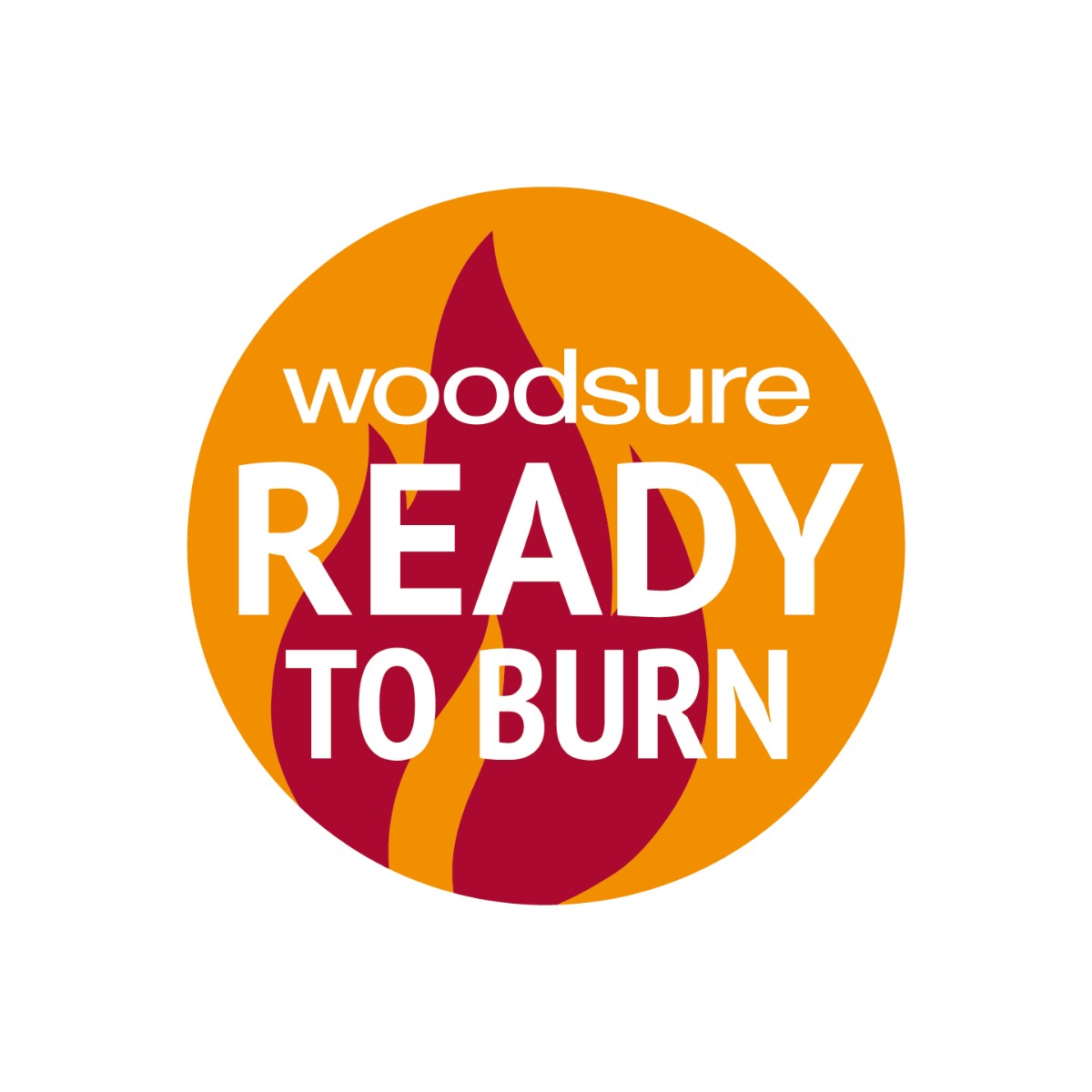
Ready to Burn
Ready to Burn is a scheme backed by Government, fuel suppliers and retailers to encourage home owners to only burn kiln dried firewood. Kiln dried firewood produces significantly less smoke than wet wood when burnt, so a shift towards burning kiln dried will have a positive affect on air quality. The scheme was launched in October 2017.
Government Calls For Cleaner, More Efficient Fuels In Air Quality Report
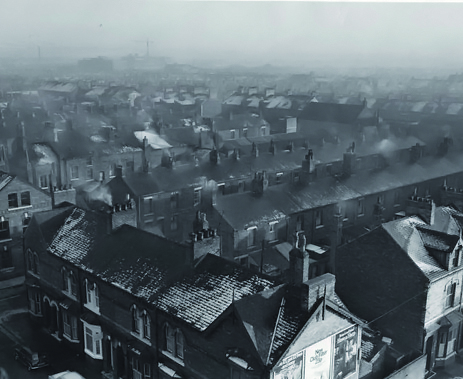
Back in the 1950’s, the burning of coal was blamed for the Great Smog of 1952, which resulted in the deaths of around 4,000 Londoners and the introduction of smokeless zones in many urban areas across the UK, where the burning of coal is banned.
We know these days that several factors contribute to dirty air across the UK, including high levels of particulates from diesel car engines and the increasing popularity of burning firewood on wood-burning stoves.
Recently the Government also issued an updated air quality report acknowledging the need to work with solid fuel retailers to make a shift towards using more efficient, cleaner fuels and stoves.
So, as your solid fuel provider, we’re writing to let you know that you’re doing exactly the right thing if you are already using Homefire’s range of high-performing smokeless fuels on your fires and multi-fuel stoves.
These fuels were developed specifically to reduce smoke. Compared to house coal they emit up to 80% less smoke and are therefore authorised for use in smokeless zones.
Equally, we appreciate that many of our long-standing customers have been happy buying traditional house coal or anthracite from Coals2U for many years, but now we’d like to introduce you to Homefire’s range of high performing smokeless fuels.
The benefits of Homefire’s smokeless fuels are numerous: Consistently higher heat than ordinary house coal, more economical, better for your health and better for your appliance.
Smokeless fuels also produce far fewer harmful particulates and were developed to combat this exact problem of air pollution whilst still allowing people living in smokeless zones fuels that they could use on their fireplace.
With a wealth of industry knowledge and a team of expert staff, we also feel it is important to share information and provide guidance wherever we can on using the right fuel in the right appliance.
Tackling Air Pollution Whilst Enjoying The Healthy Glow Of A Fire
About Us
Homefire TV Advert
Homefire TV Advert - Behind The Scenes
In the past, many towns and cities of the UK suffered with terrible smog, caused by the widespread use of coal fires in homes. The Clean Air Act, introduced in 1956 was one of several government measures introduced to help reduce smoke pollution and improve the quality of the air that we breathe.
Smokeless Zones
Smokeless zones were introduced as a direct result of the Clean Air Act. Many parts of the UK are now designated smoke control areas (also known as smokeless zones). In a smokeless zone you can only burn approved smokeless fuels such as Homefire, Ecoal50 or Phurnacite.
Firewood is not an authorised fuel and cannot be used in smokeless zones, unless burnt on a DEFRA exempt appliance (see below).
To find out if your property is within a smokeless zone, you will need to speak to your local council, who set the zones and are responsible for enforcement.
Exempt Appliances
Firewood can be burnt in a smokeless zone, but only on a specially designed exempt appliance. However this does not mean you can simply burn anything on an exempt appliance and you should always refer to the appliance manufacturer’s guidelines as to which fuels can be used.
The Situation Today
With the introduction of the measures above, coupled with the widespread consumer switch from coal to gas fired heating, air quality had improved dramatically since the 1950's. However, that trend has seen a reverse in recent years. Air quality; particularly in urban areas, has been getting worse. This has been caused by the increased number of diesel cars and lorries on our roads, but also the rise in the popularity of wood burning stoves.

Ready to Burn
Ready to Burn is a scheme backed by Government, fuel suppliers and retailers to encourage home owners to only burn kiln dried firewood. Kiln dried firewood produces significantly less smoke than wet wood when burnt, so a shift towards burning kiln dried will have a positive affect on air quality. The scheme was launched in October 2017.
Why Buy From Homefire?
We don't just sell, we make
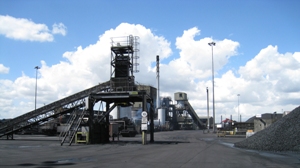
There are dozens of companies out there that just sell fuel. However, we are one of a handful of these who actually make the fuel ourselves. We've got a huge manufacturing plant at Immingham which churns out tens of thousands of tonnes each month. Manufacturing the fuel at this plant means that we can ensure that the product that arrives at your door is from the UK, is of the highest quality, and produces the very best heat for your home.
Testing, testing, and more testing
We constantly strive for excellence and never settle for second best. Through our extensive labs, at our Immingham plant and HQ, we spend every day testing each of our products to ensure that they tick all the boxes. This extensive testing process gives you the assurance that you are buying fuel which is guaranteed to live up to expectations.
Let us do the lifting

We hear horror stories on a regular basis about pallets of fuel dumped outside people's homes. But we deliver bags of smokeless coal the old-fashioned way, carried on the back of one of our friendly drivers who will deliver your fuel straight into your bunker or shed - whichever suits you best. Let us do the heavy lifting for you!
A hands-on, technical team
We know that fires and appliances can be temperamental at times. From problems with the chimney to a dodgy draught regulator, there are a number of things that could cause your fuel to not perform properly. To help you overcome these little hurdles we have a technical team that can visit your home to carry out an inspection and try and identify the root of the problem. Where it is shown that it is our fuel which is at fault then we will obviously replace the product free of charge. It's this proactive and hands-on approach that sets us apart from the rest.
Innovation is our middle name
One of the very best things about us is that we never stop looking for new ways to help you heat your home. Our experts are always busy trying out new combinations of fuels to try and get the right balance between environmentally friendly and powerful fuels. This doesn't just stop with smokeless coal, as we are also one of the leading companies developing renewable fuels, such as Homefire Olive Briquettes and Supercharged Heat Logs
Thanks for taking the time to look through our site and we hope you find the perfect fuel for your fire or appliance.
Homefire Coal Merchants
Homefire is the UK's leading coal merchant, supplying coal products to thousands of households throughout England and Wales.
Why 100,000 customers tell us we're the UK's Top Coal Merchant
- Helpful advice and support
- Clean, tidy, and speedy coal deliveries
- Friendly and courteous drivers
- High quality coal products
- Consistent service standards
- Scheduled Order Service
- Knowledgeable and friendly staff
- Great value for money
- Professional, organised, and trustworthy
Our heritage as the UK's leading Coal Merchant
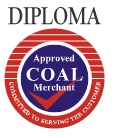
- Over 200 years in business
- Formed from the Merger of Charringtons & British Fuels
- Member of Approved Coal Merchants Scheme (No. 00220)
- 42 Coal Merchant depots nationwide
- Supplies Ecoal - the UK's first smokeless fuel manufactured from renewable materials
- We supply over 75,000 tonnes annually
- Prompt coal deliveries and excellent service
Homefire's range of Market Leading Fuels
|
Smokeless fuels for open fires and multi-fuel stoves |
|||
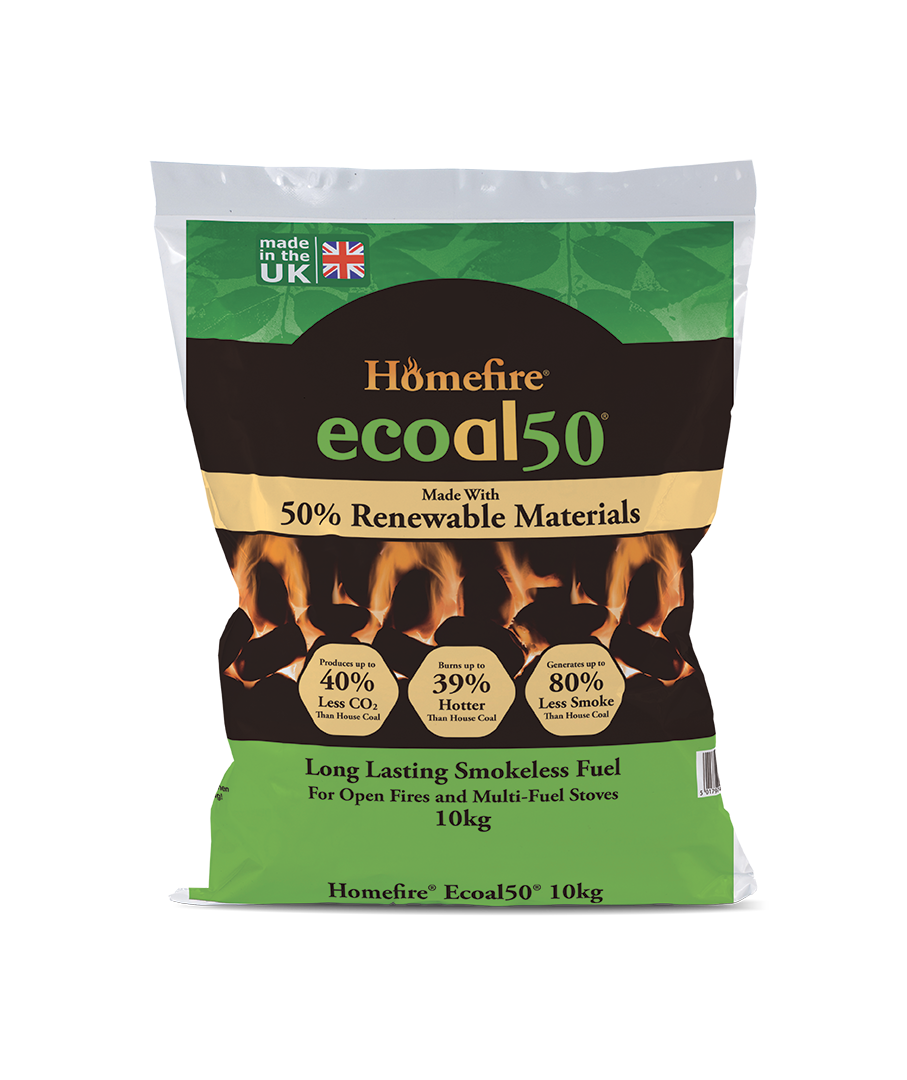 |
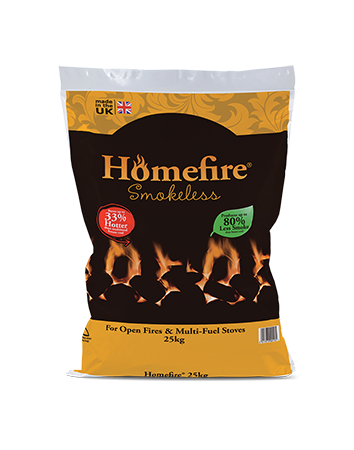 |
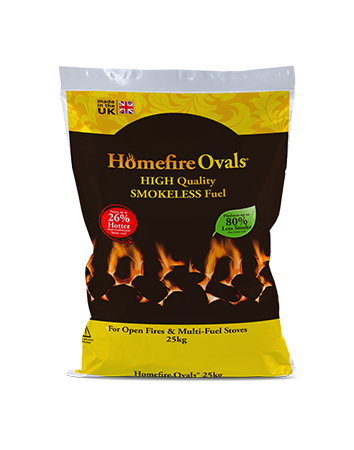 |
|
| Ecoal |
Homefire | Homefire Ovals | |
|
Smokeless fuels for heaters, cookers and boilers |
|||
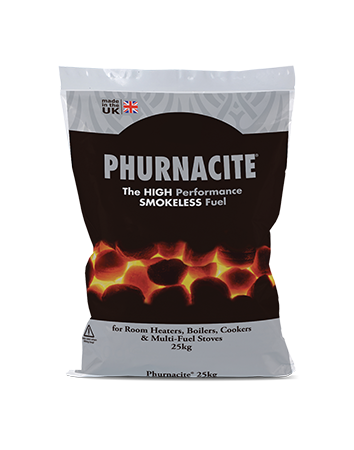 |
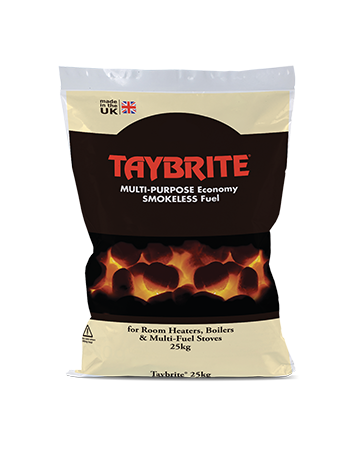 |
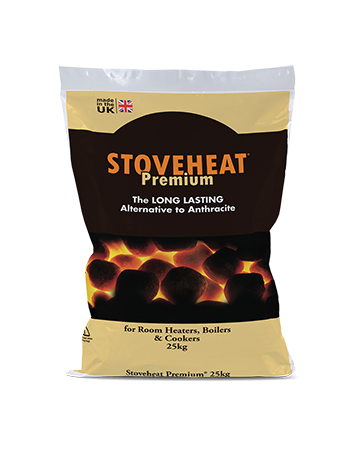 |
|
| Phurnacite | Taybrite | Stoveheat | |
A Fascinating Timeline Of Homefire's History
There's a long and detailed history behind Homefire and the company we are today. From our humble beginnings way back in 1731 we have grown and developed to be the UK's leading coal merchant and supplier.
To give you an idea behind the history of Homefire we've summarised it below in a fascinating timeline:
1731 - Charringtons was established

1800s - Coal sales boom as a result of the Industrial Revolution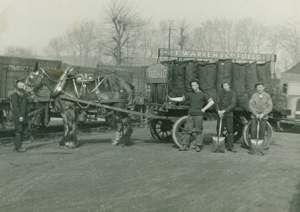
1920's - New motorised delivery vehicles were introduced
1923 - Charringtons' Head Office founded
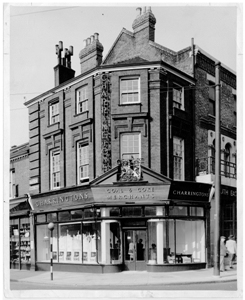
1956 - Clean Air Act introduced to cut smoke emissions from Britain's homes and factories
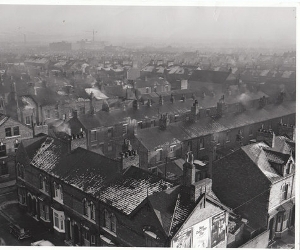
1970's - Charringtons' fleet continues to grow

1995 - Senior management completed a buy out of Coal Products Ltd. from British Coal Corporation

1997 - The acquisition of Charringtons and British Fuels Ltd. to form Homefire Group Ltd.
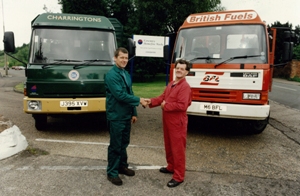
2000 - Garden products introduced into the range
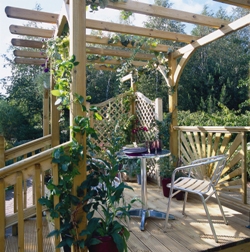
2005 - Homefire's delivery fleet re-branded presenting a new modern image
-
2009 - Ecoal, UK's first "eco" smokeless fuel produced

2009 - Kiln drying log production commenced

2009 - Installation of the new packing plant and distribution hub to boost productivity and support the supply chain
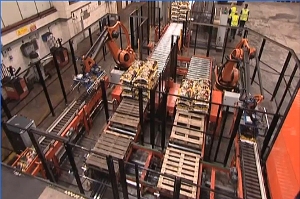
2018 - Homefire Industries Announce Plans To Build UK’s First Commercial-Scale Hydrothermal Carbonisation Unit At Immingham Site
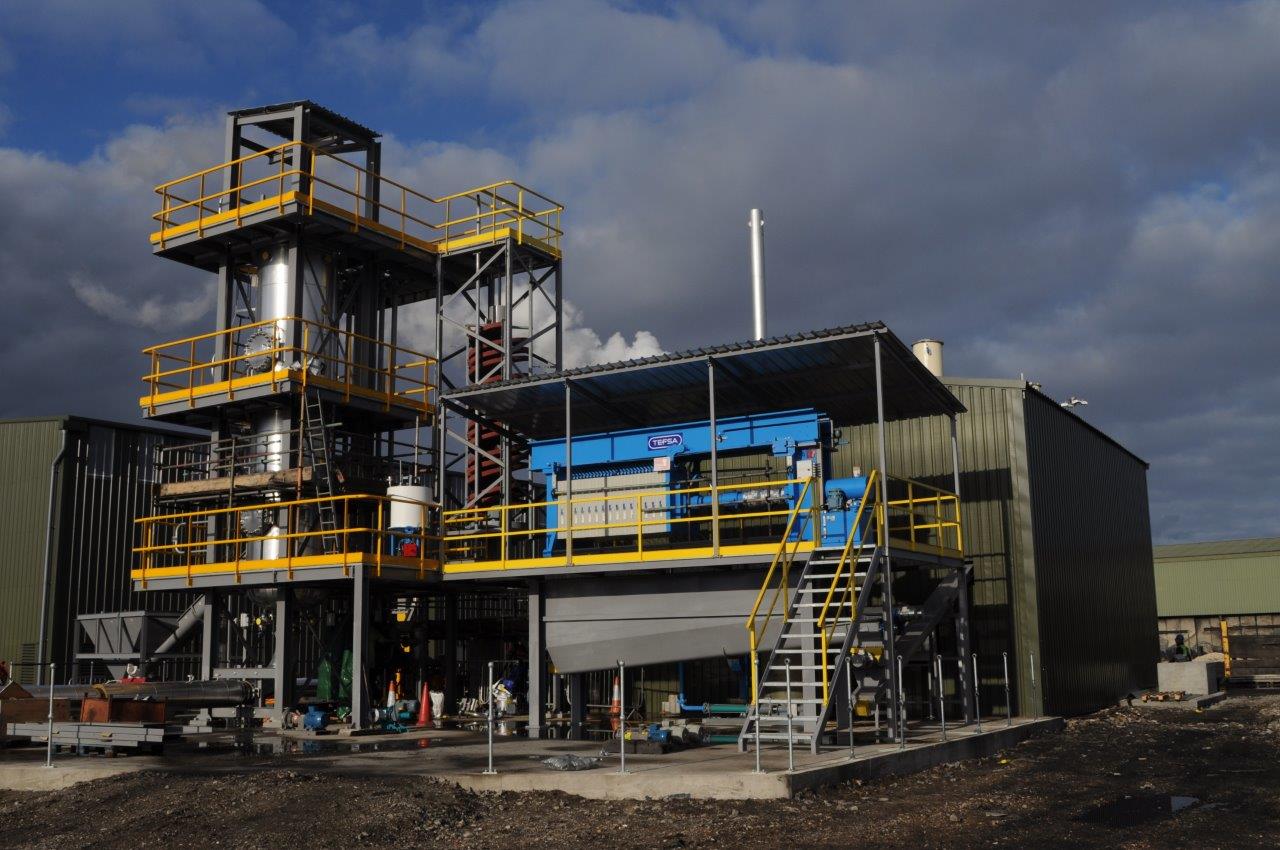
Britain's Premier Solid Fuel Suppliers
As the UK’s leading smokeless fuel merchant, we are always striving to make the purchasing of smokeless coal and firewood online, or by telephone, as simple and hassle free as possible. Our range encompasses not only market leading smokeless fuels, such as Homefire or Phurnacite, but also includes fantastic kiln dried log and charcoal.
We are the only online smokeless coal and firewood seller who will deliver your fuel direct to your coal bunker or log store, regardless of where you live in England, Scotland or Wales. We have 32 distribution depots located from Penzance to Mossend in Scotland. We even have depots on the Isle of Man and the Isle of Wight. Every other website you come across selling coal will either need you to collect it, will only deliver to a small area, or don't actually make the delivery themselves, instead having to rely on pallet delivery companies.
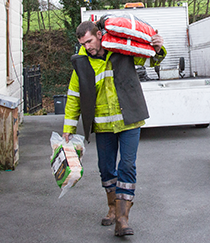
On our website we aim to provide all the best fuels, and all the facts. We’ve worked hard on our comprehensive product and information guides, to ensure that our customers are getting the very best. Not just from us, but from their fuel and appliances too.
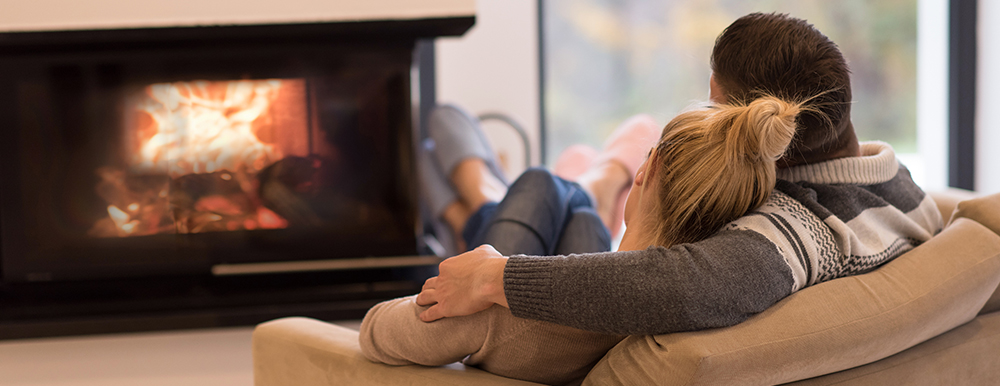
More
Useful Links
|
World Coal Institute Provides information on uses of coal in a global market and its environmental impact. |
|
|
|
National Coal Mining Museum |
|
Coal International trade magazine Latest news on the coal mining industry. |
|
|
|
The Coal Merchants Federation Information on the Coal Trade Code, ACMS Scheme and its importance to the consumer. |
|
The Solid Fuel Association Information on solid fuel and solid fuel appliances |
|
|
HETAS Solid fuels approval body The official body recognised by government to approve solid fuel domestic heating appliances, fuels and services. |
|
|
National Association of Chimney Engineers Lists approved Chimney engineers for all areas of the country. |
|
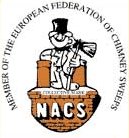 |
The National Association of Chimney Sweeps |
|
The Guild of Master Sweeps |
|
|
The Association of Professional and Independent Chimney Sweeps |
|
|
Woodsure Ready to Burn Scheme |
Trade Enquiries
International Coal Delivery Service
Copyright
The copyright and all other intellectual property in this website and its contents are owned by, or licensed to Homefire Group Ltd.
You are entitled to view this website, download and use information on the site and print out a single hard copy of any part of the site solely for your own use. Any other use is strictly prohibited without Homefire Group's prior written consent.
Privacy Policy
Head Office Directions & Map
Head Office:
Homefire Group Ltd.
Westthorpe Fields Road
Killamarsh
Sheffield
S21 1TZ
Telephone: 0345 4501474
Fax: 01246 212 212
Email: feedback@cplindustries.co.uk
Homefire Depot & Store Locations for Click & Collect:
Directions from M1 Junction 30
Leave the M1 at junction 30, then at the roundabout take the exit on to the A6135. Turn right at Barbers Row and follow the road round to the left onto Syday Lane. Continue forward onto The Avenue and then onto Station Road. Turn left onto Green Lane and then take the 1st left onto Westthorpe Fields Road. Turn right to stay on Westthorpe Fields Road.


